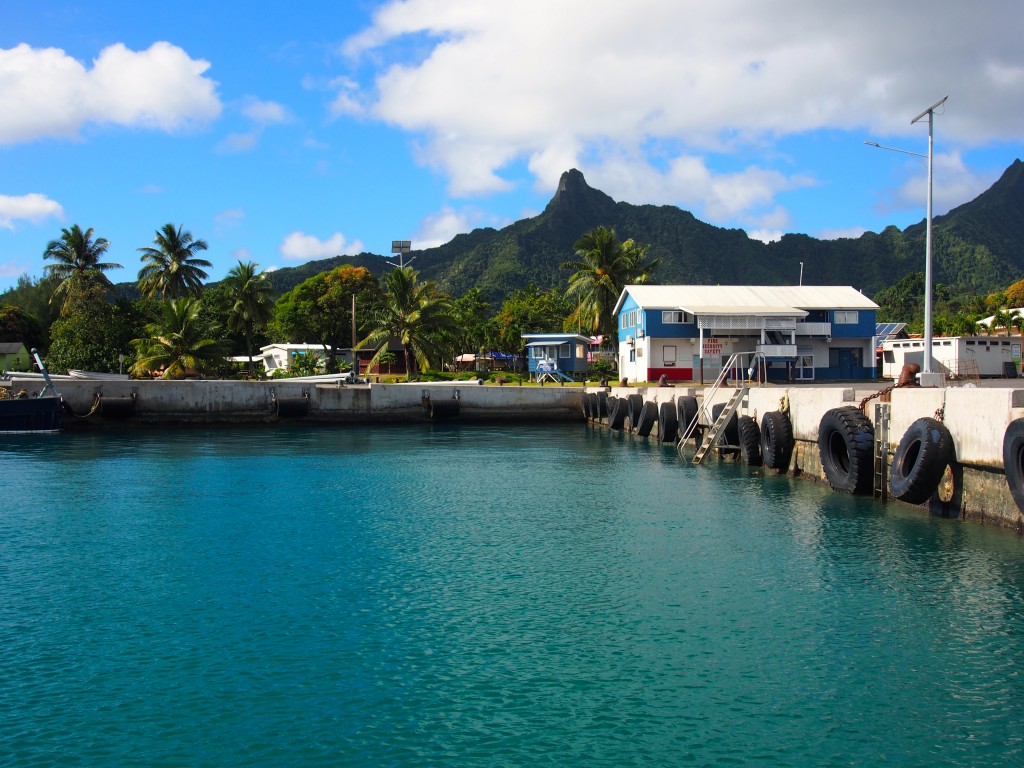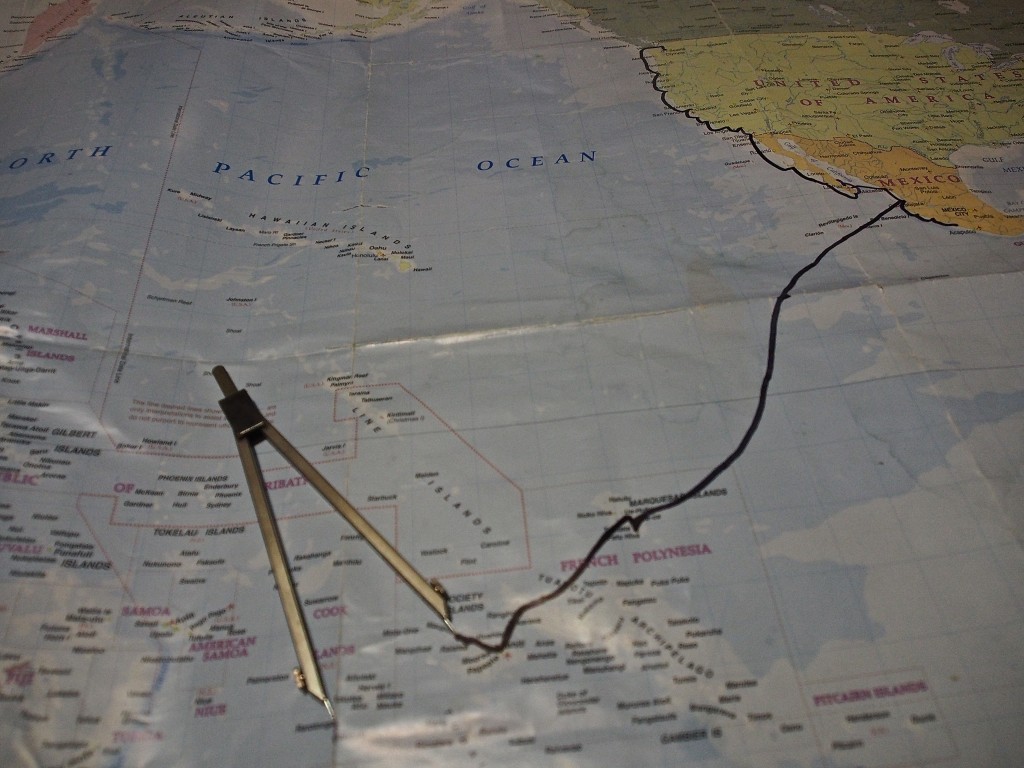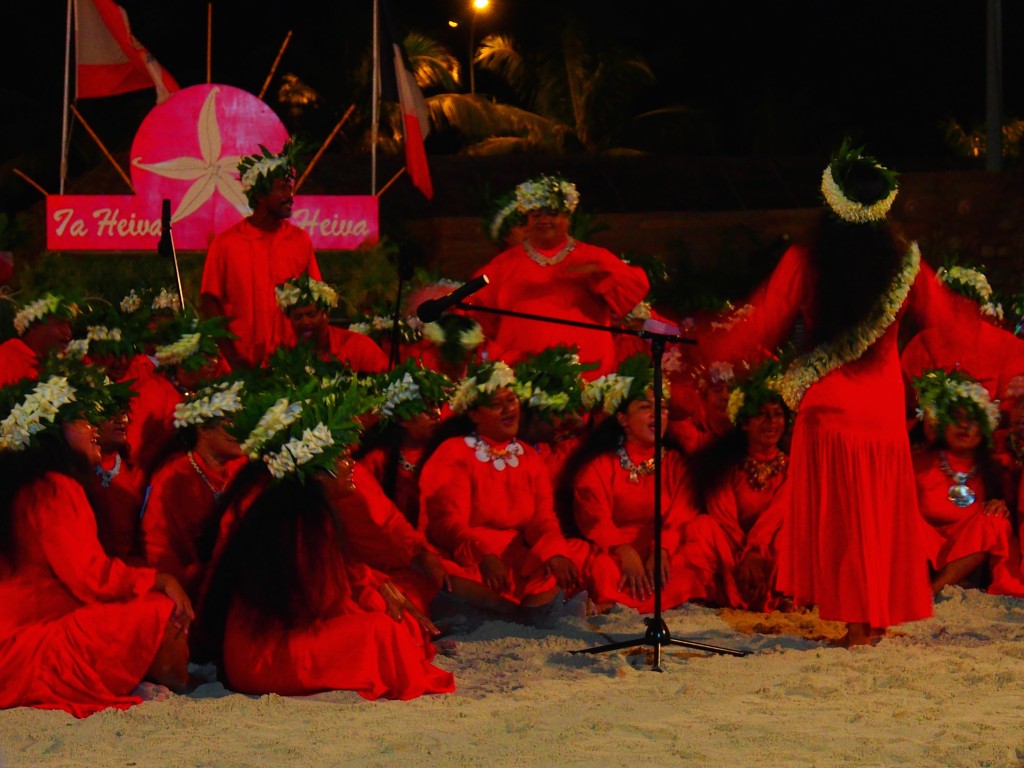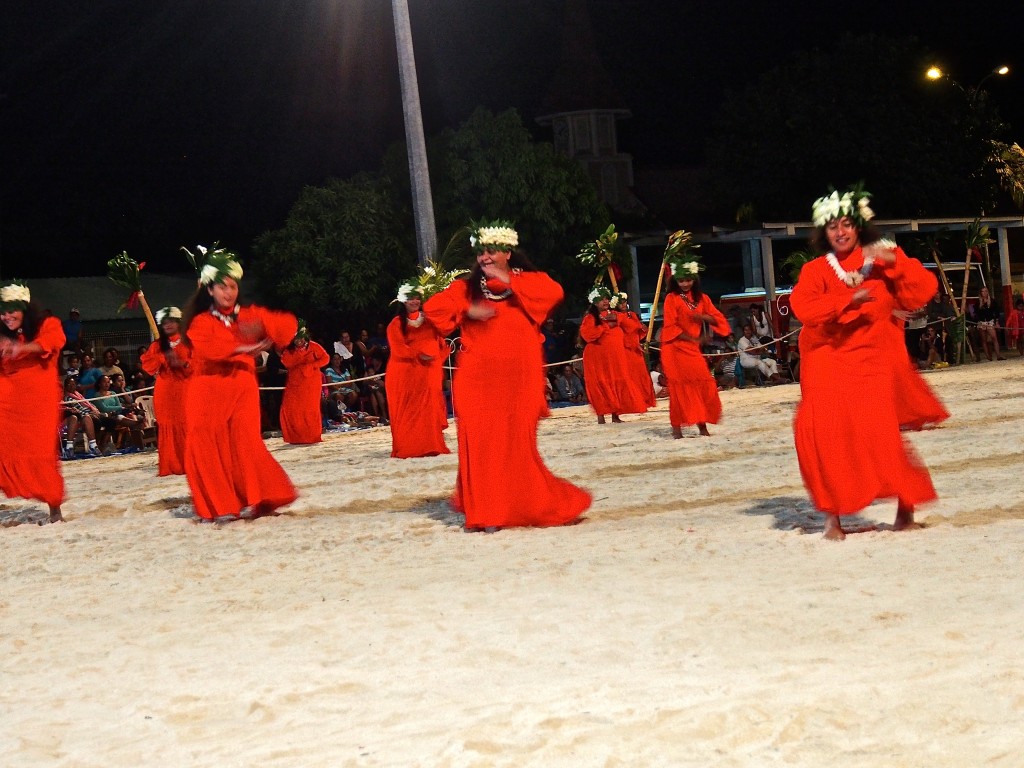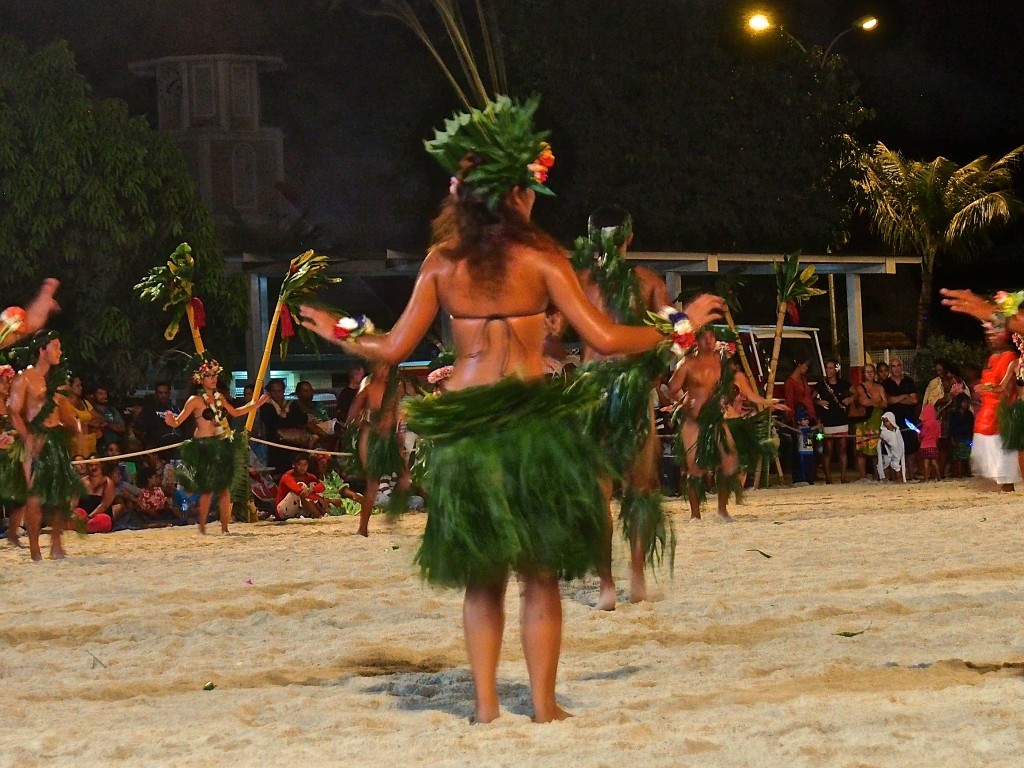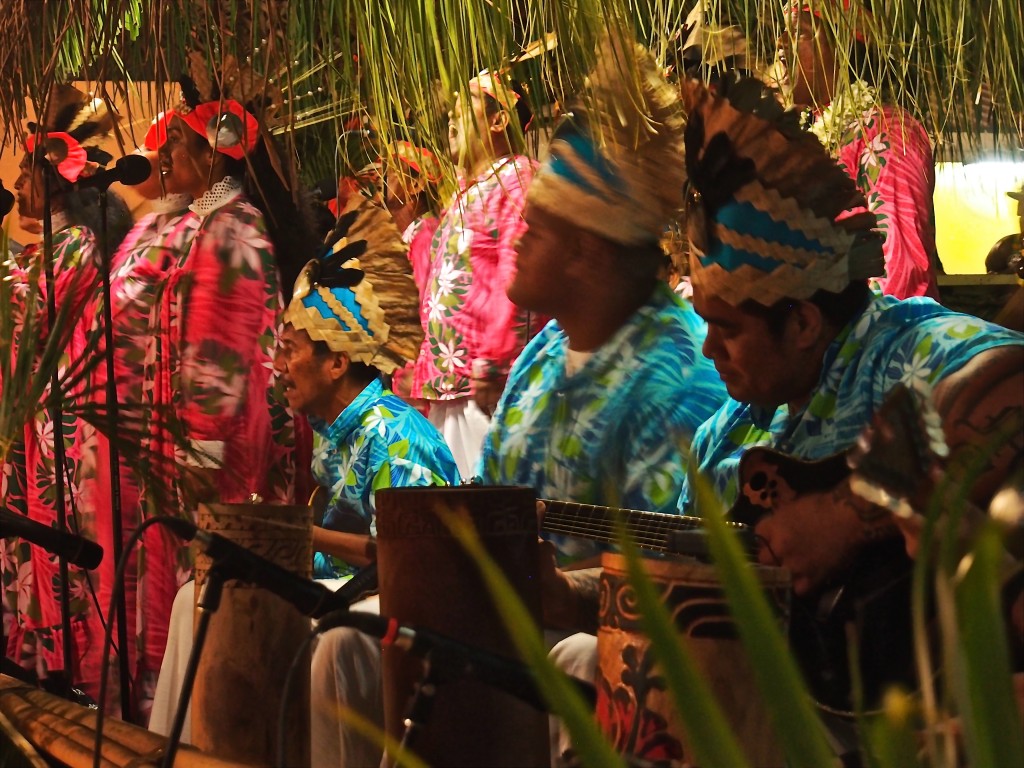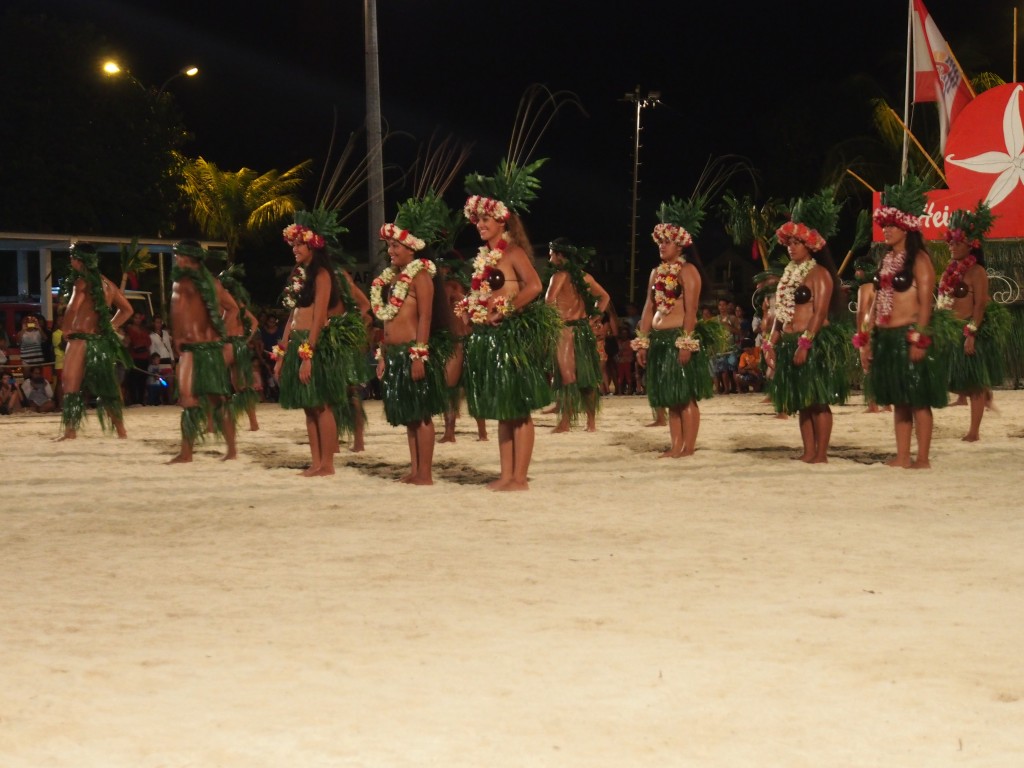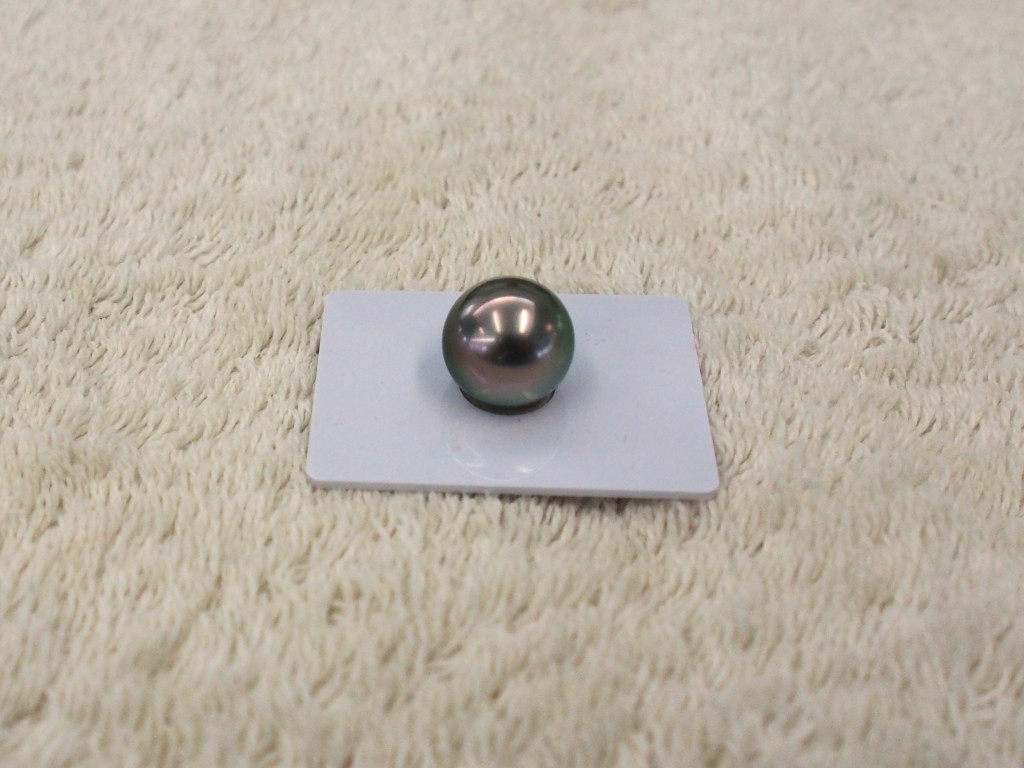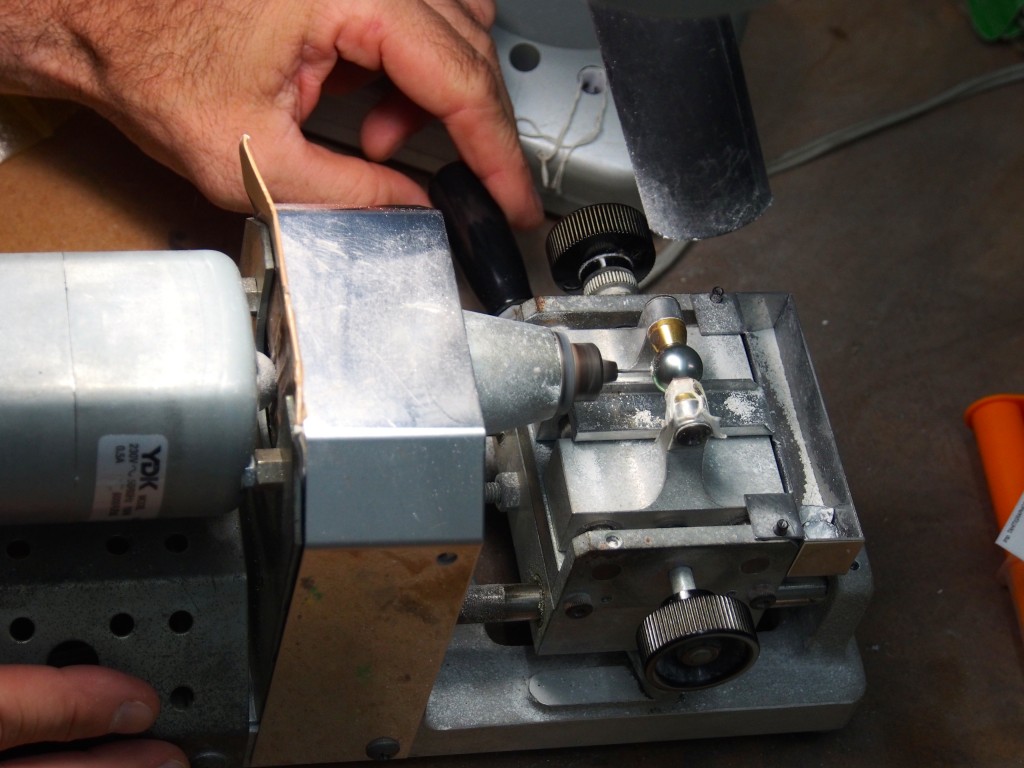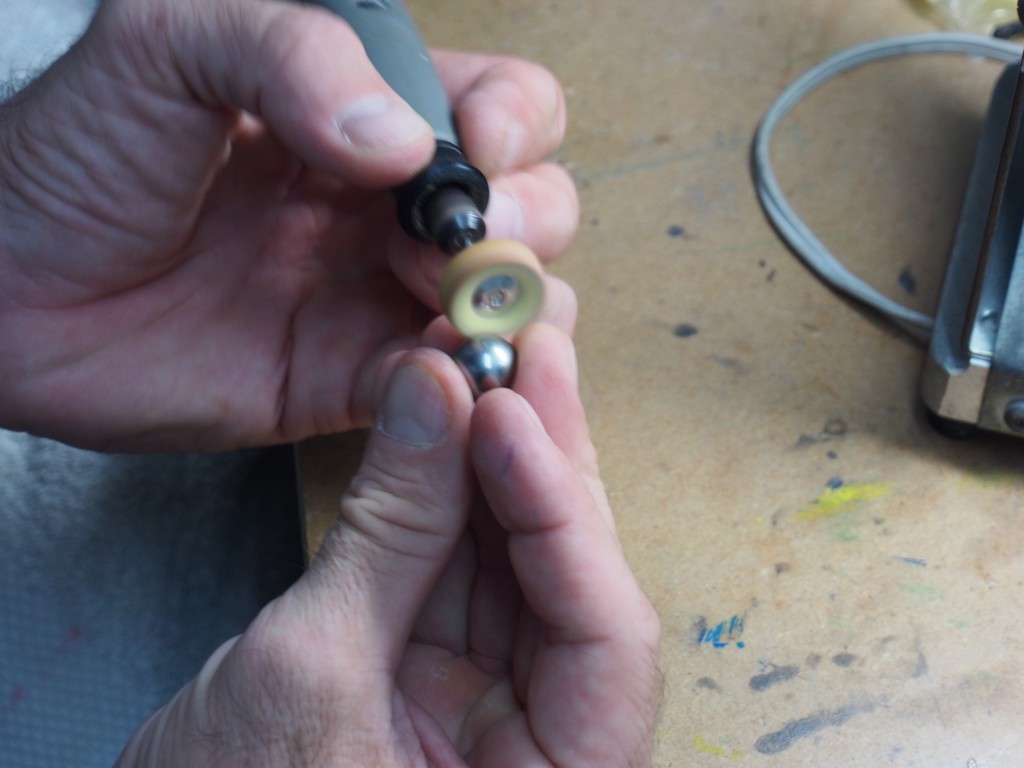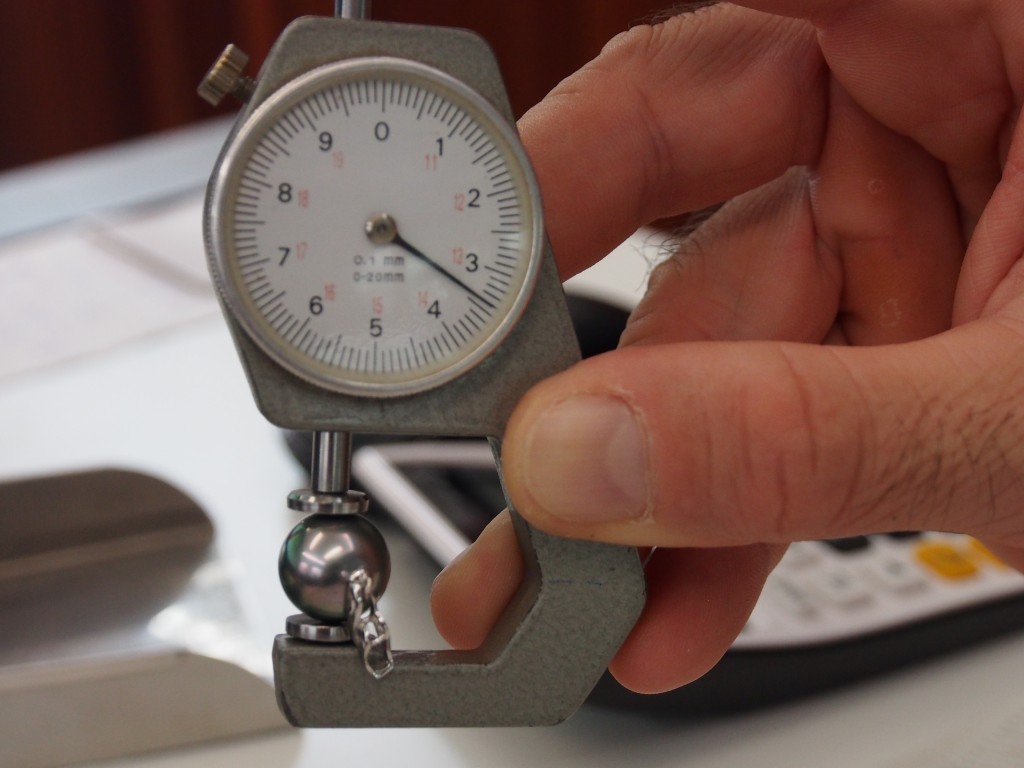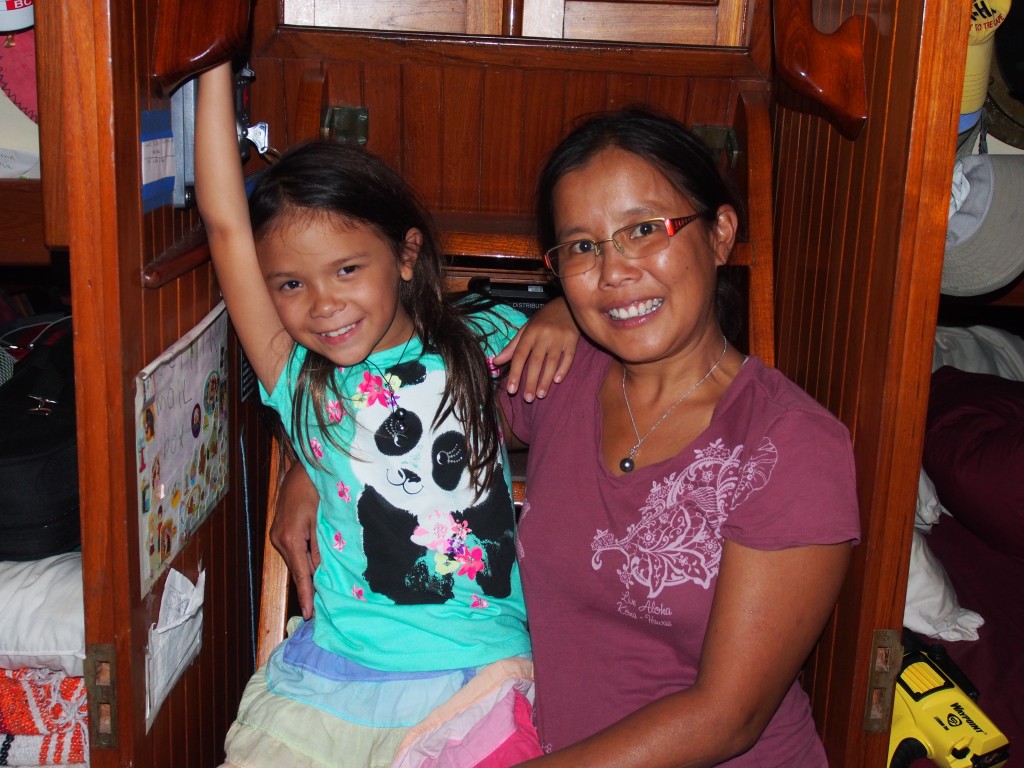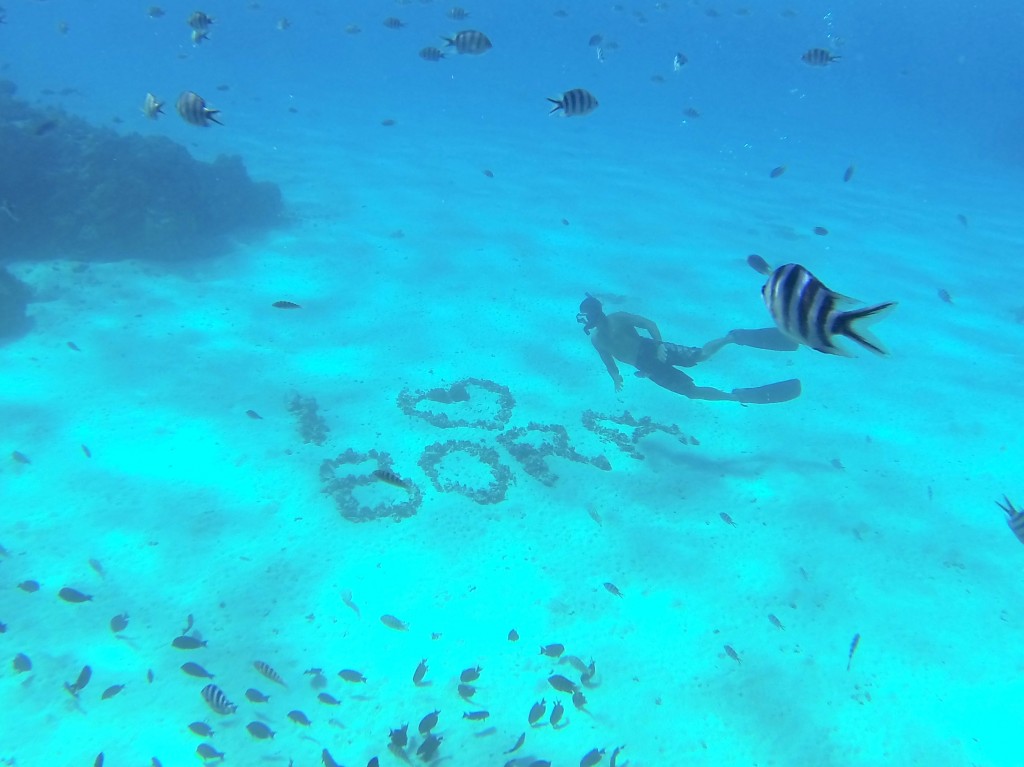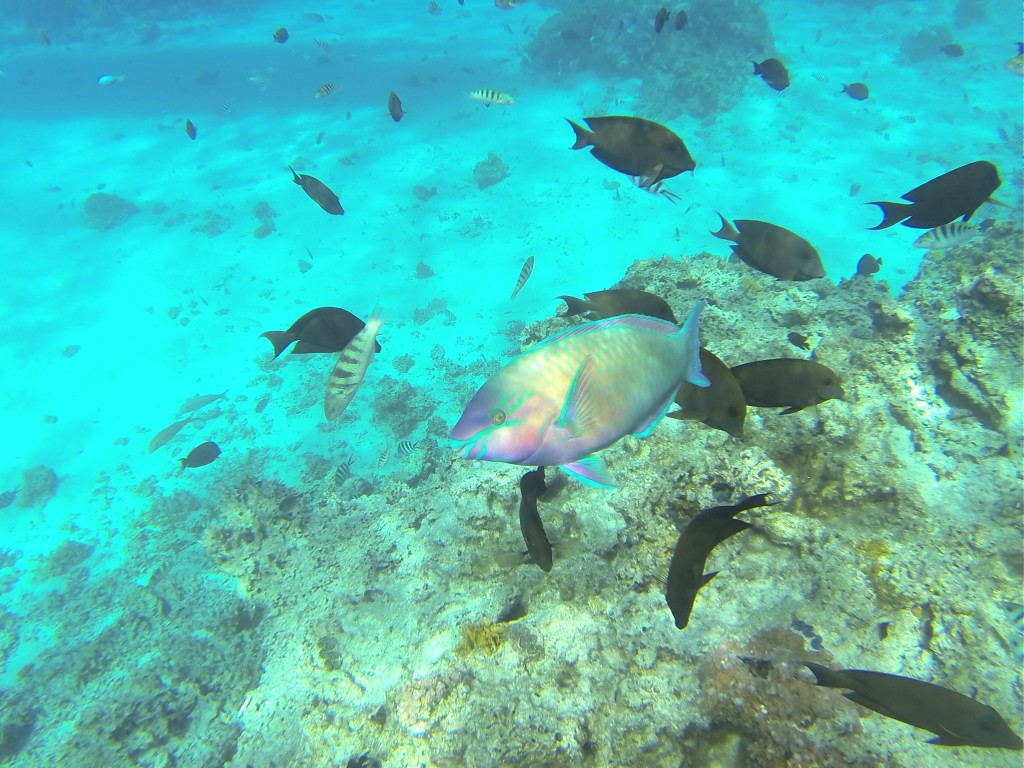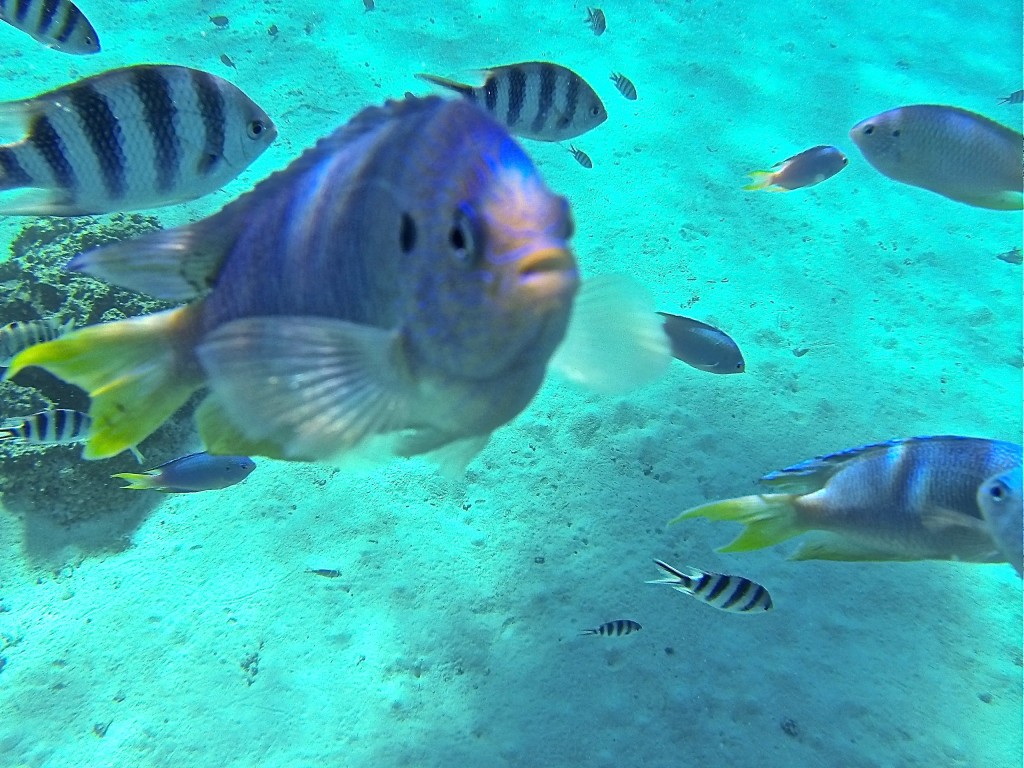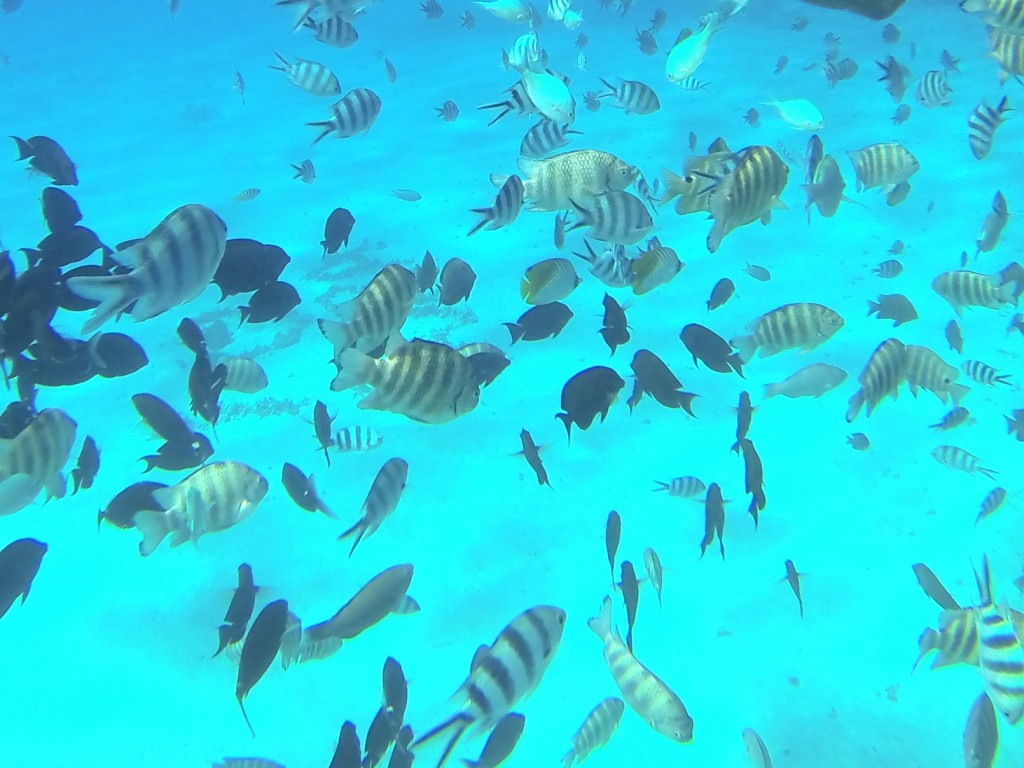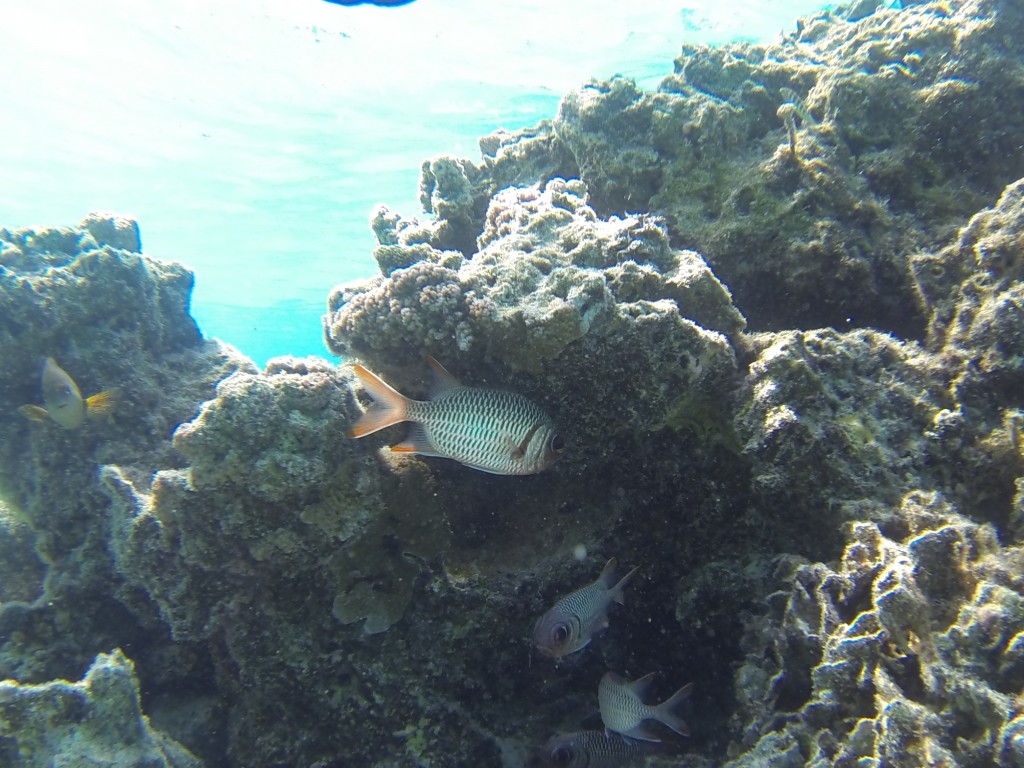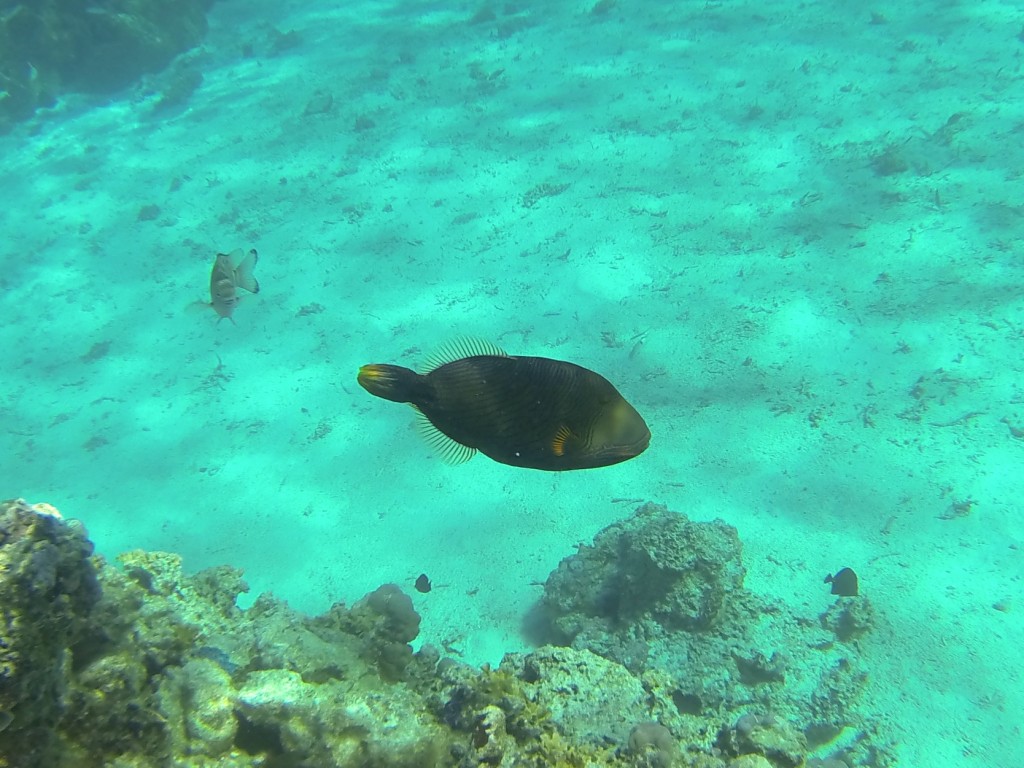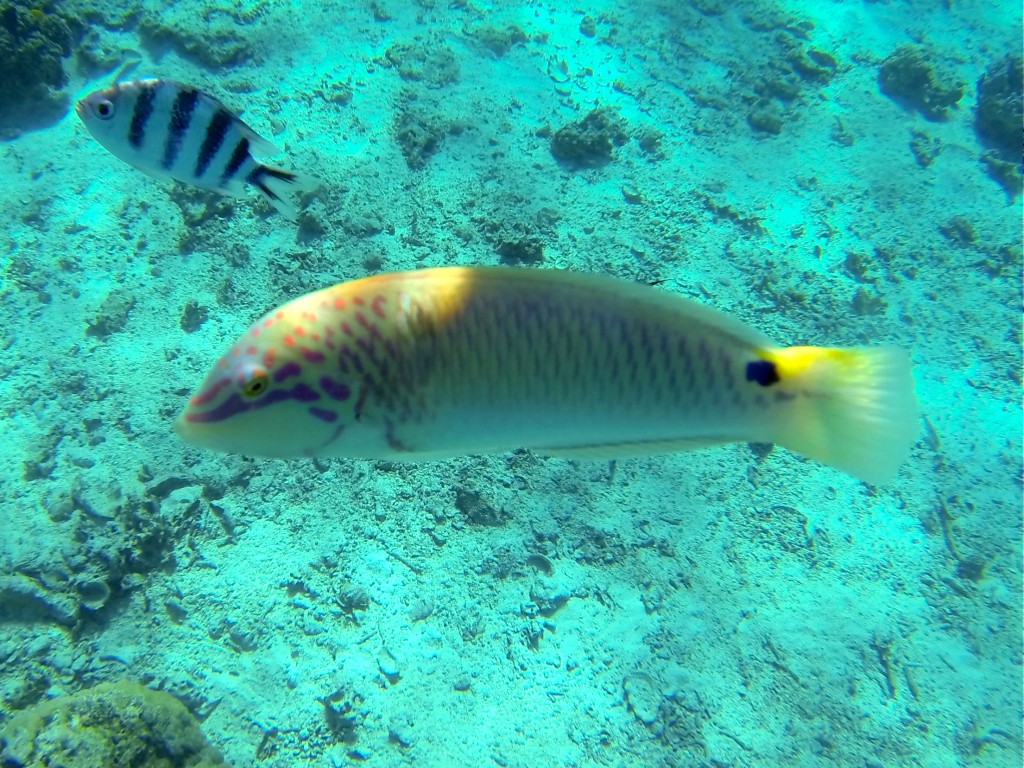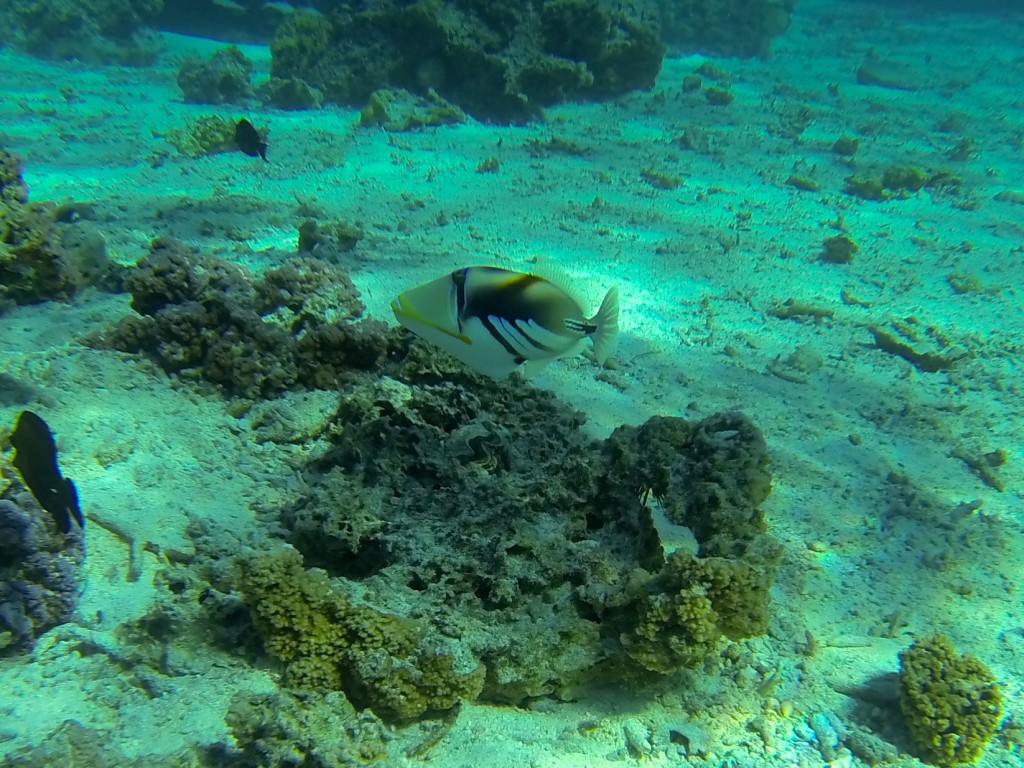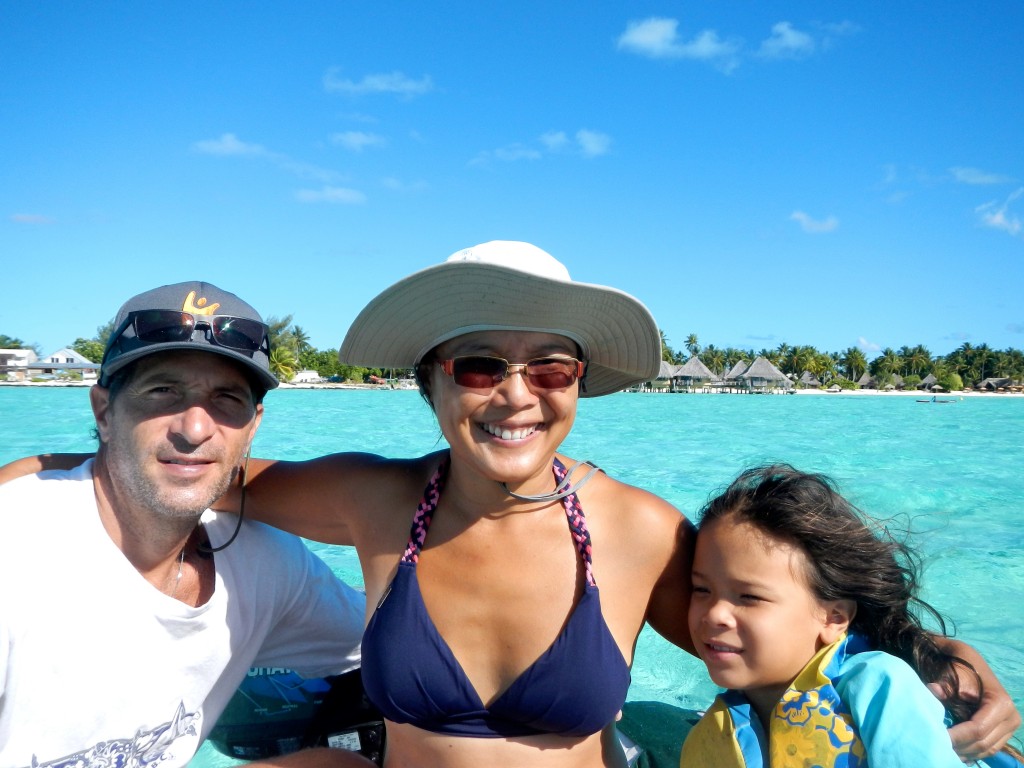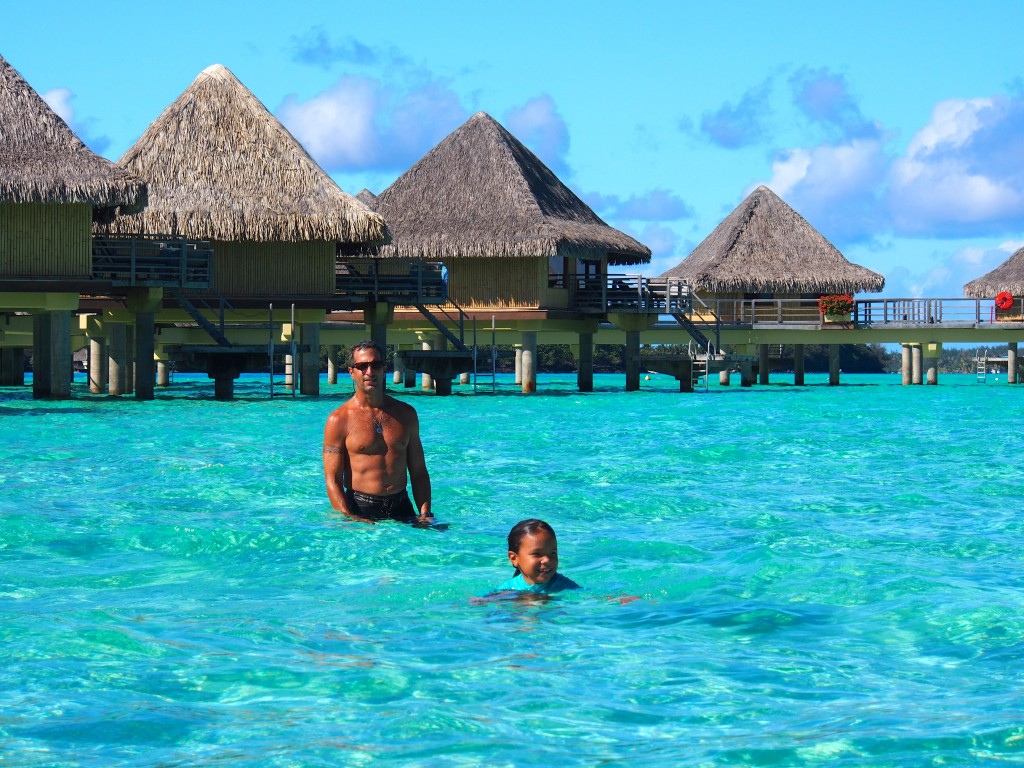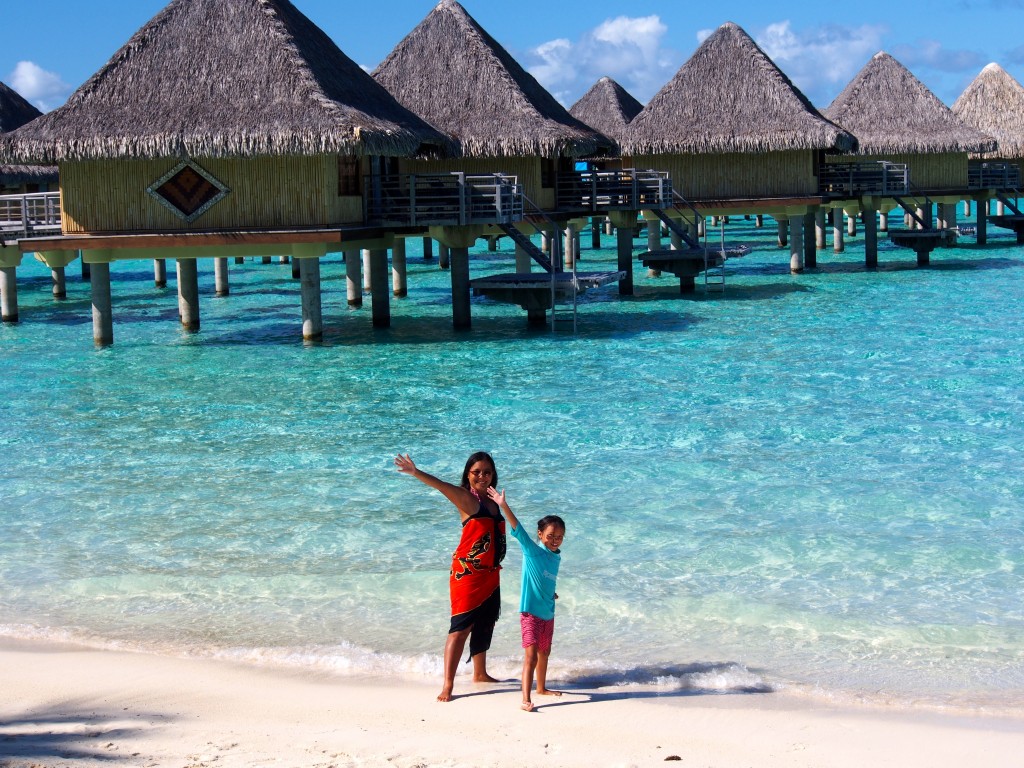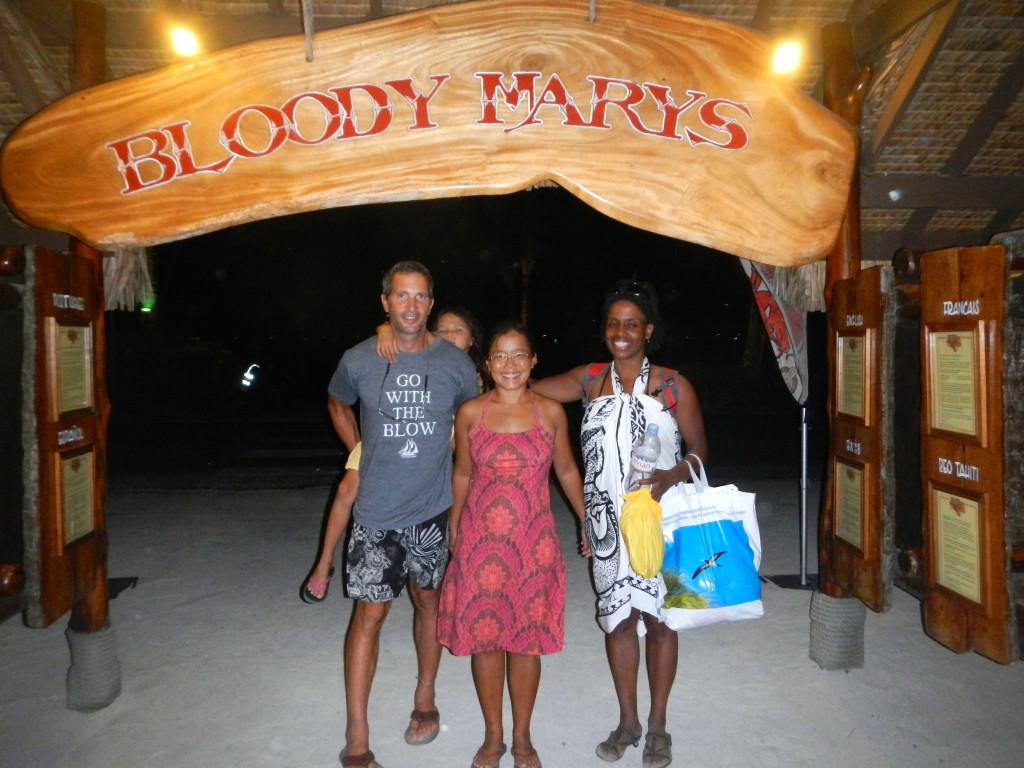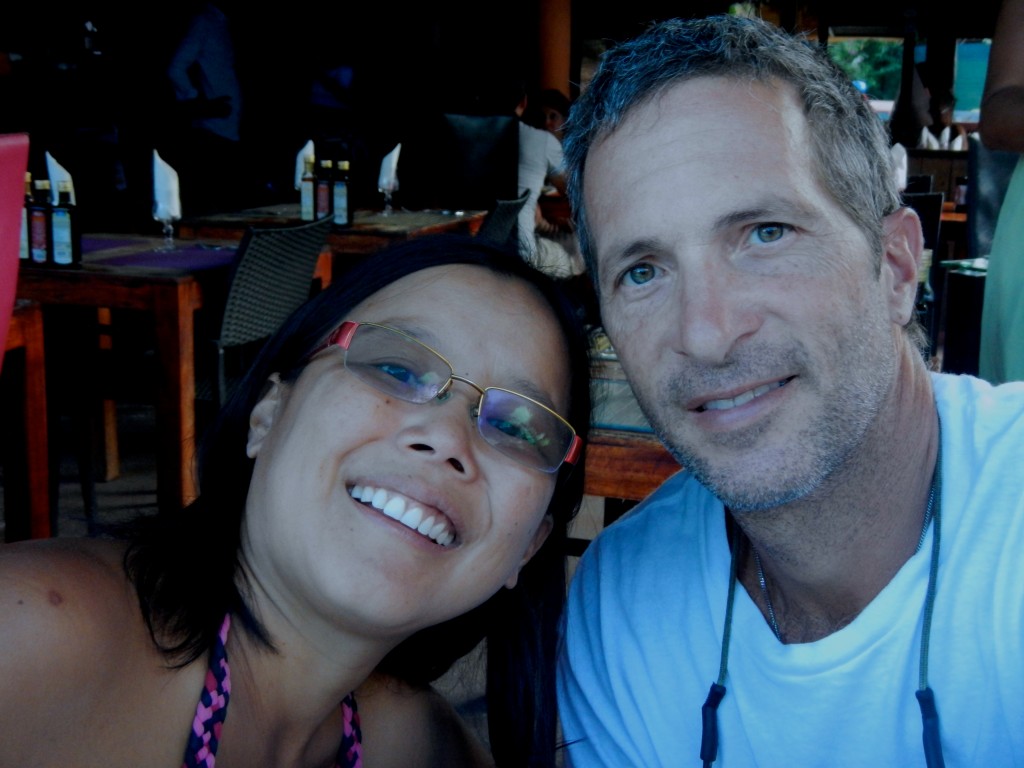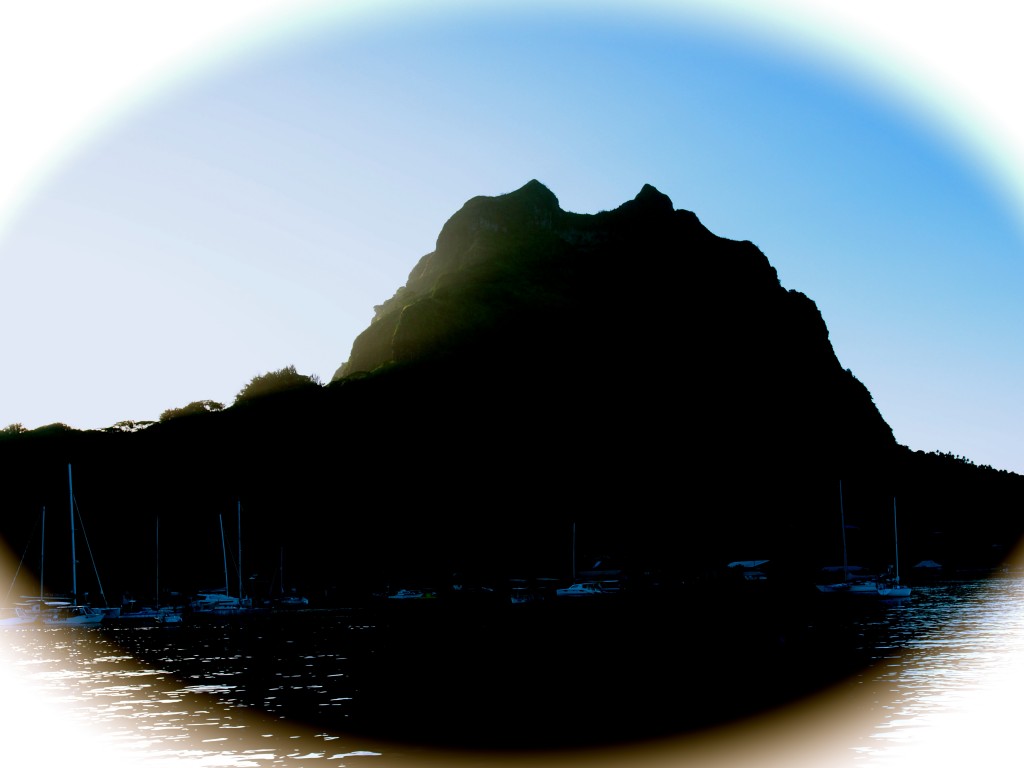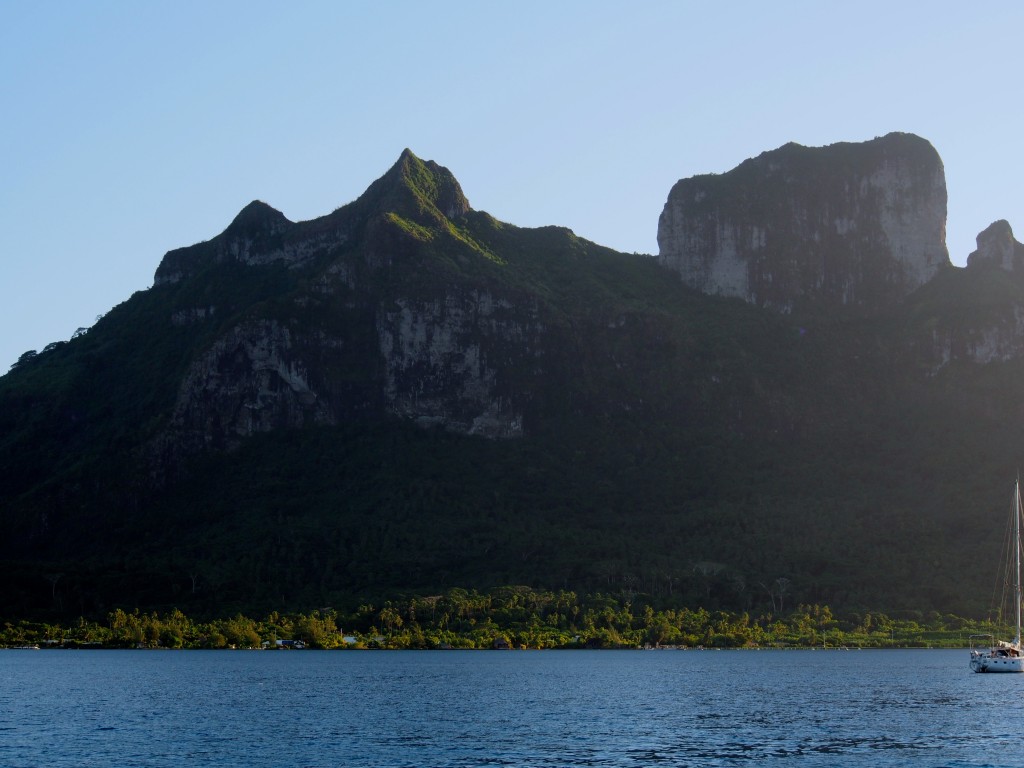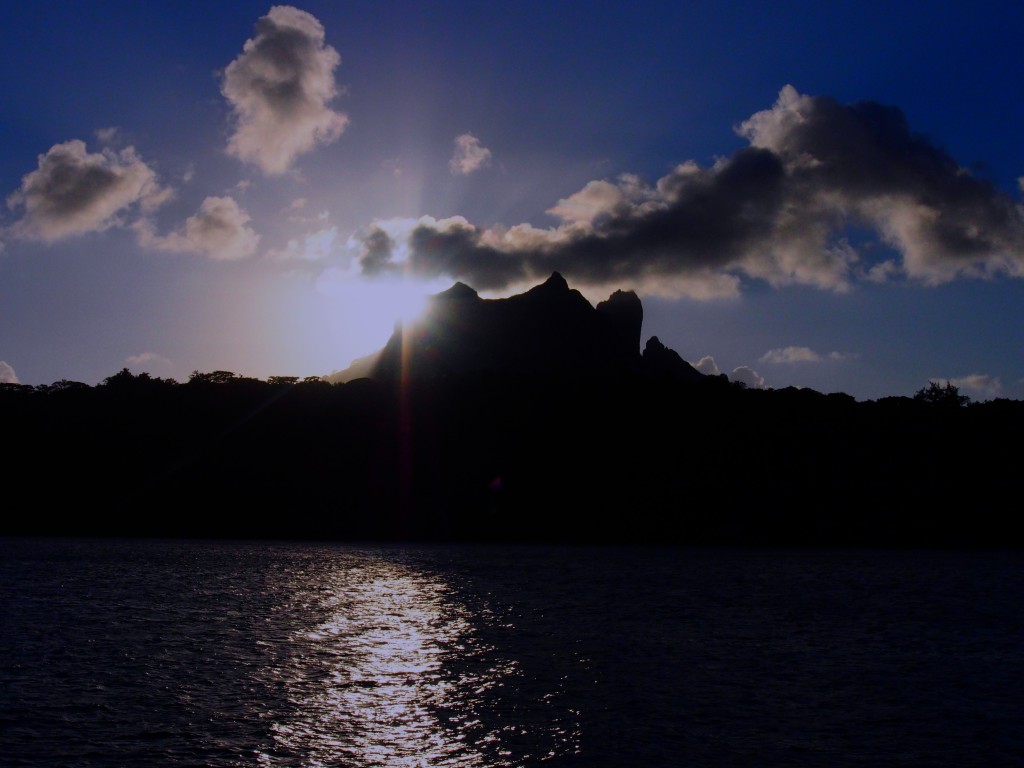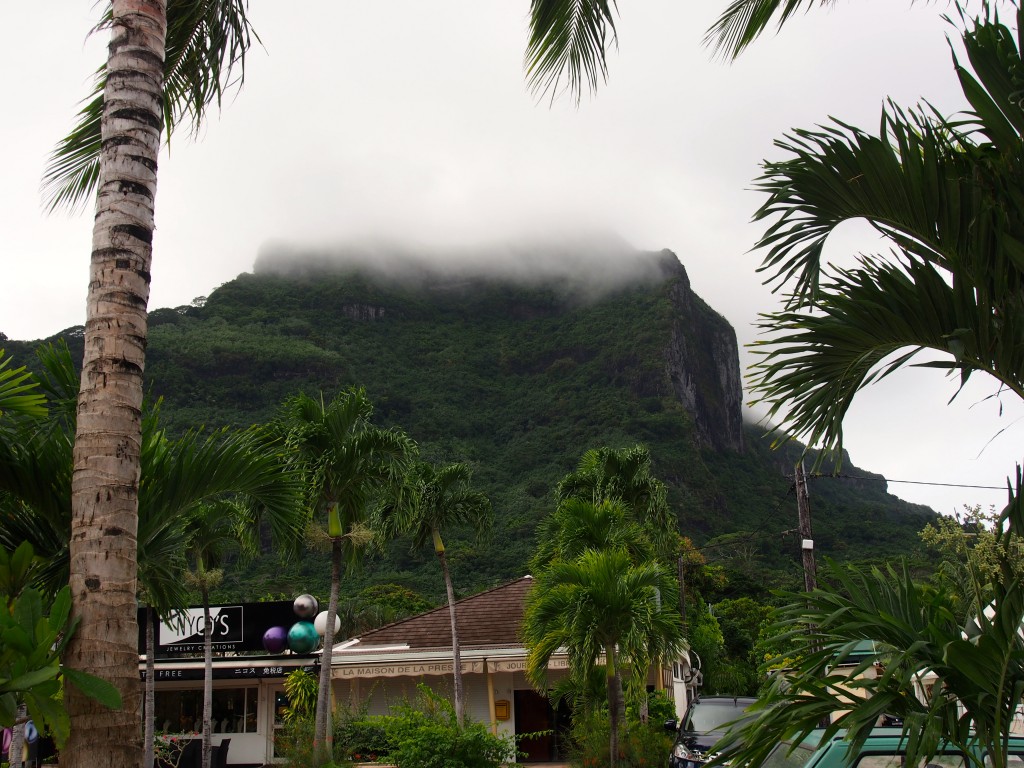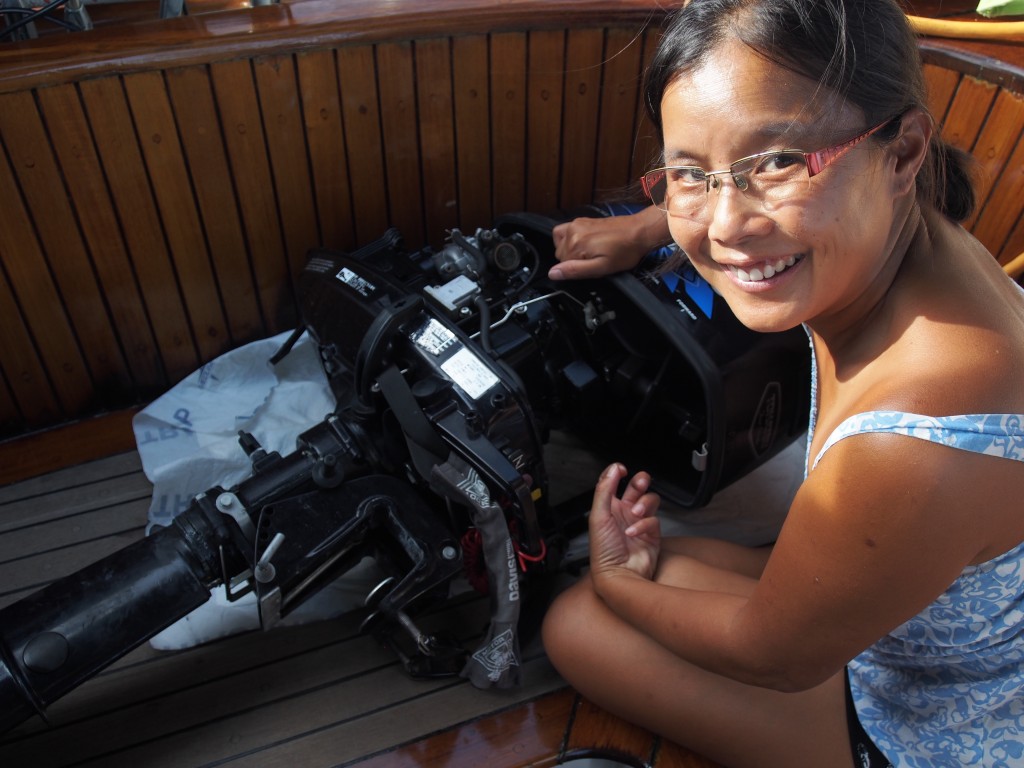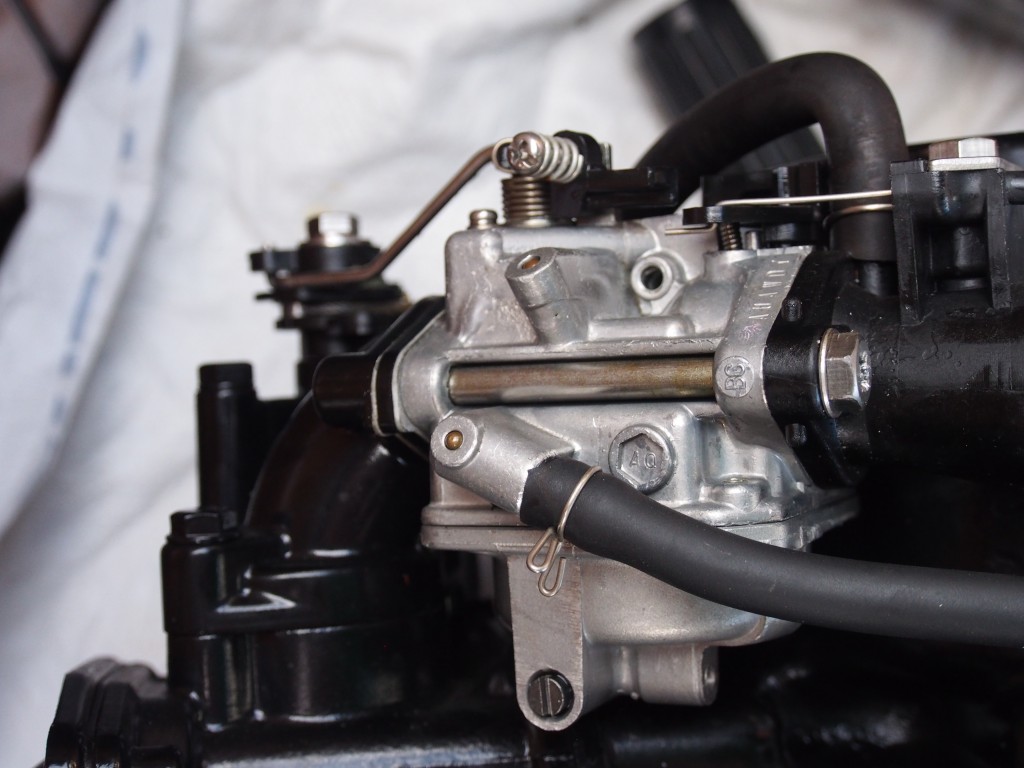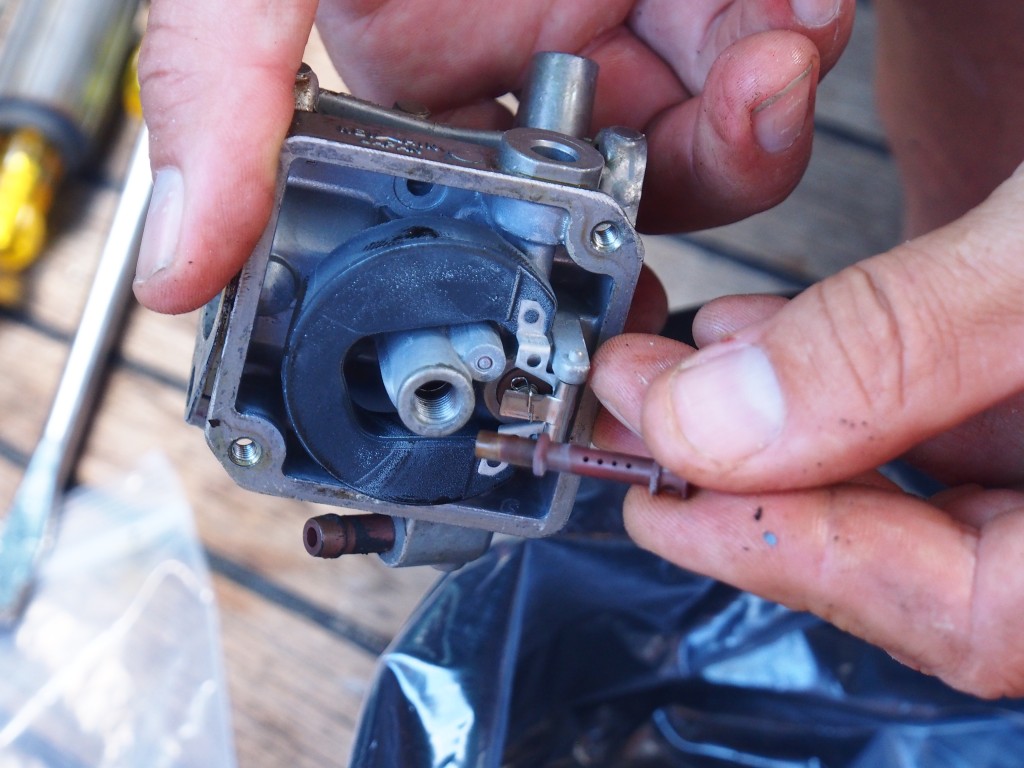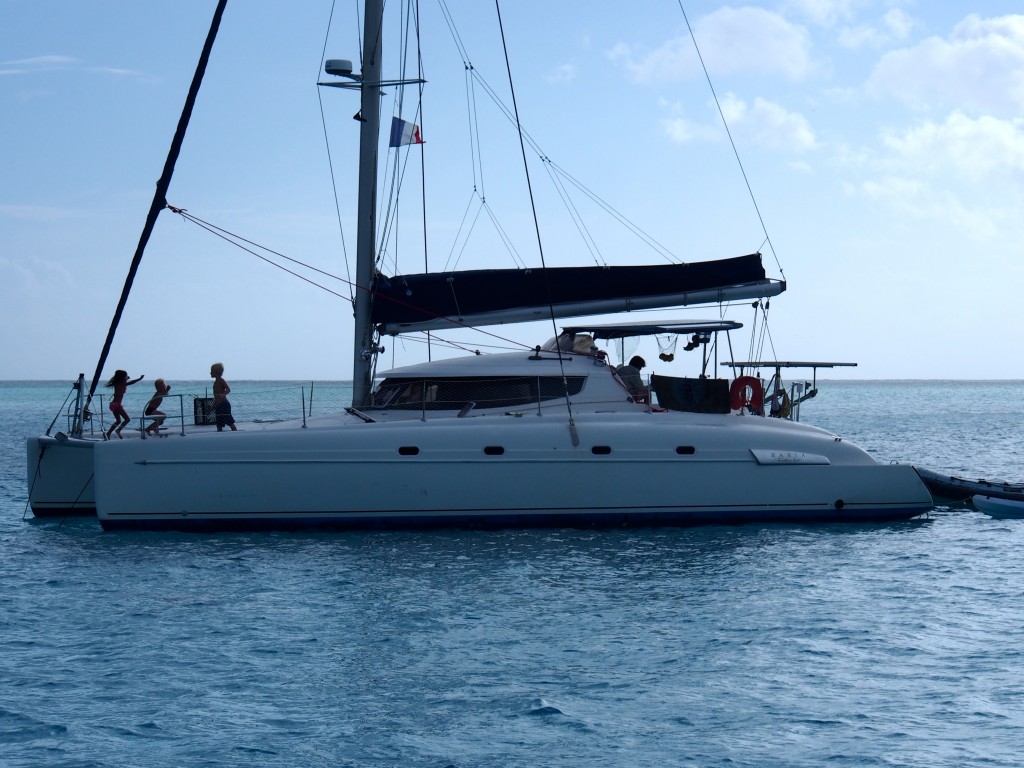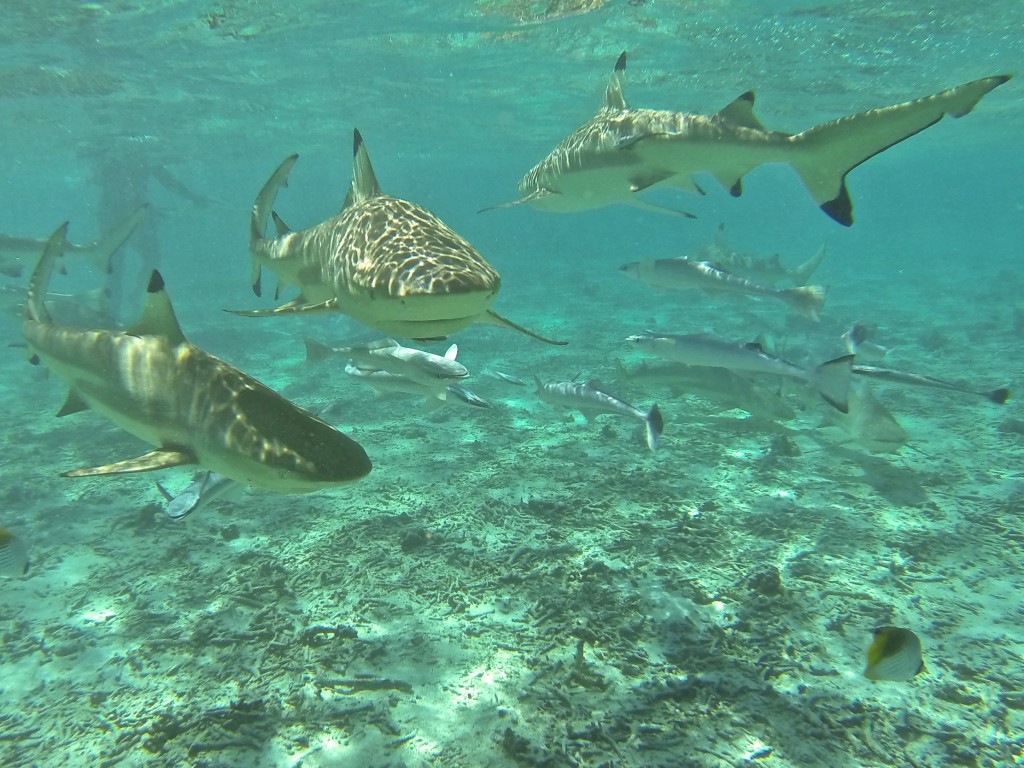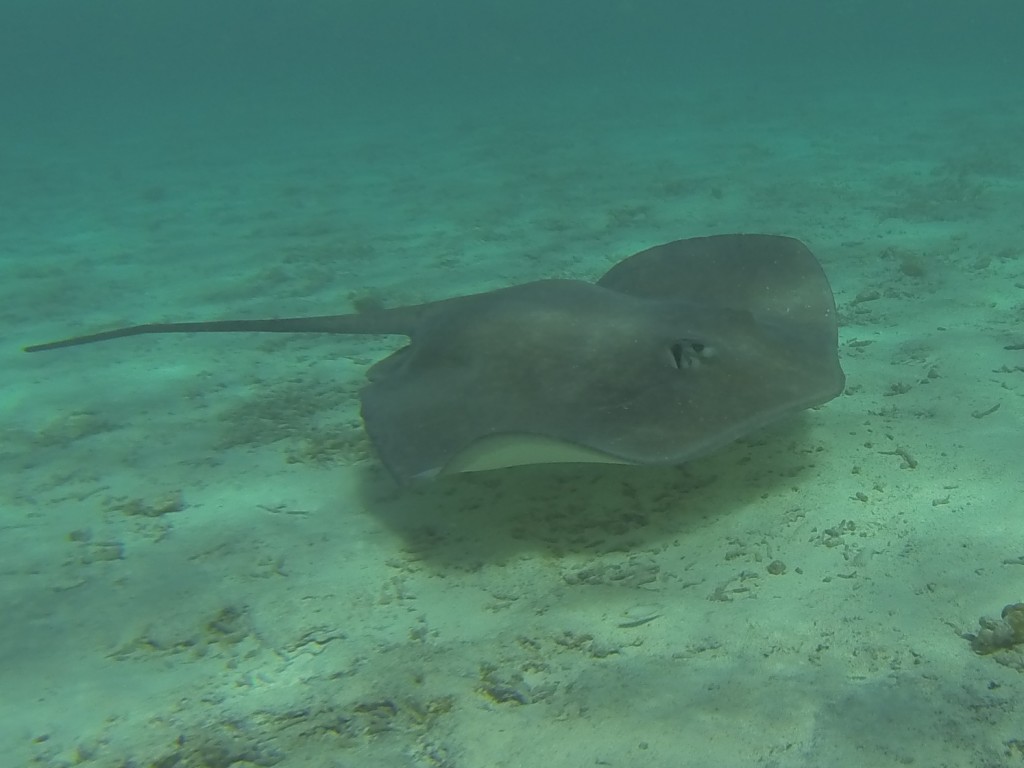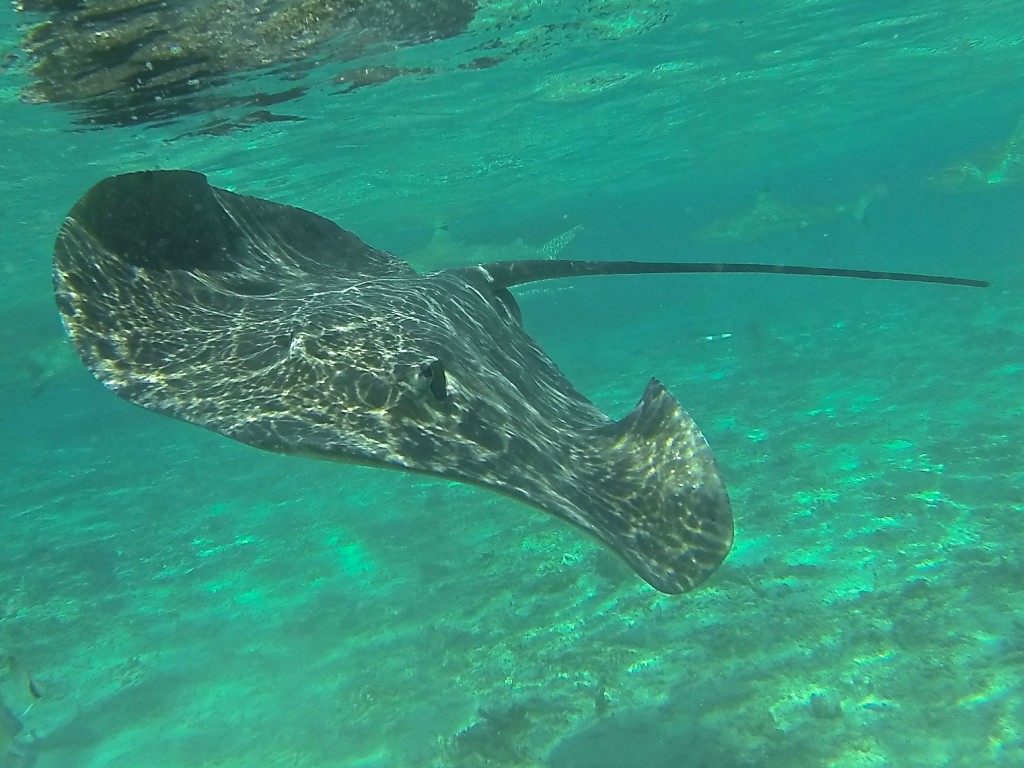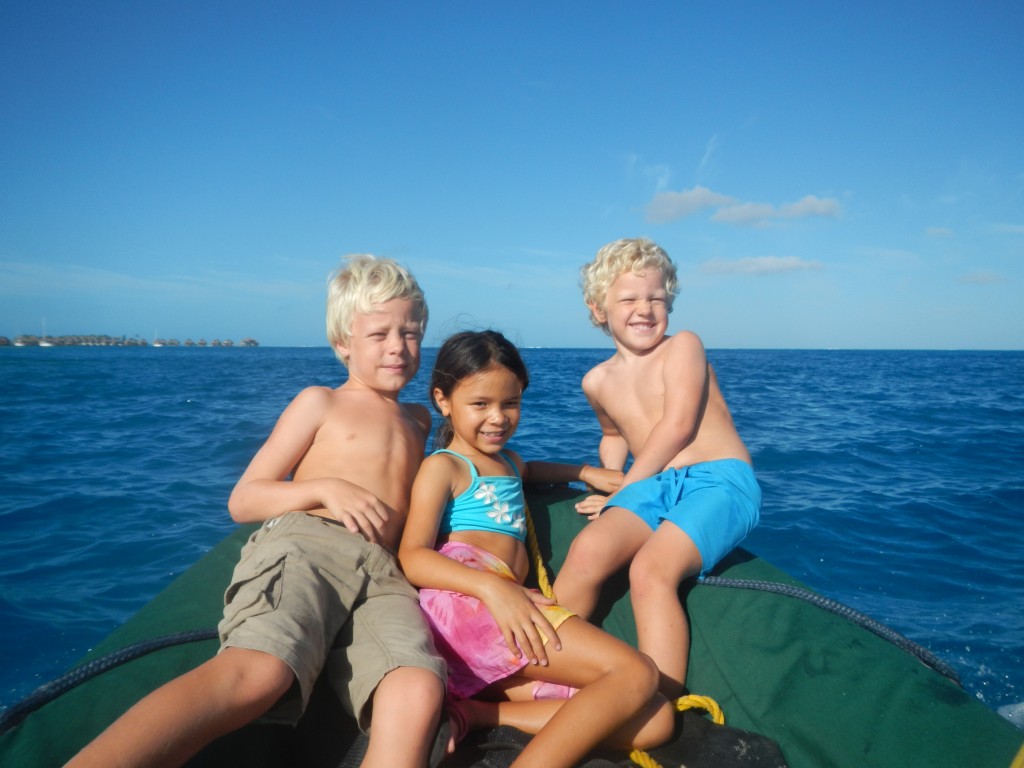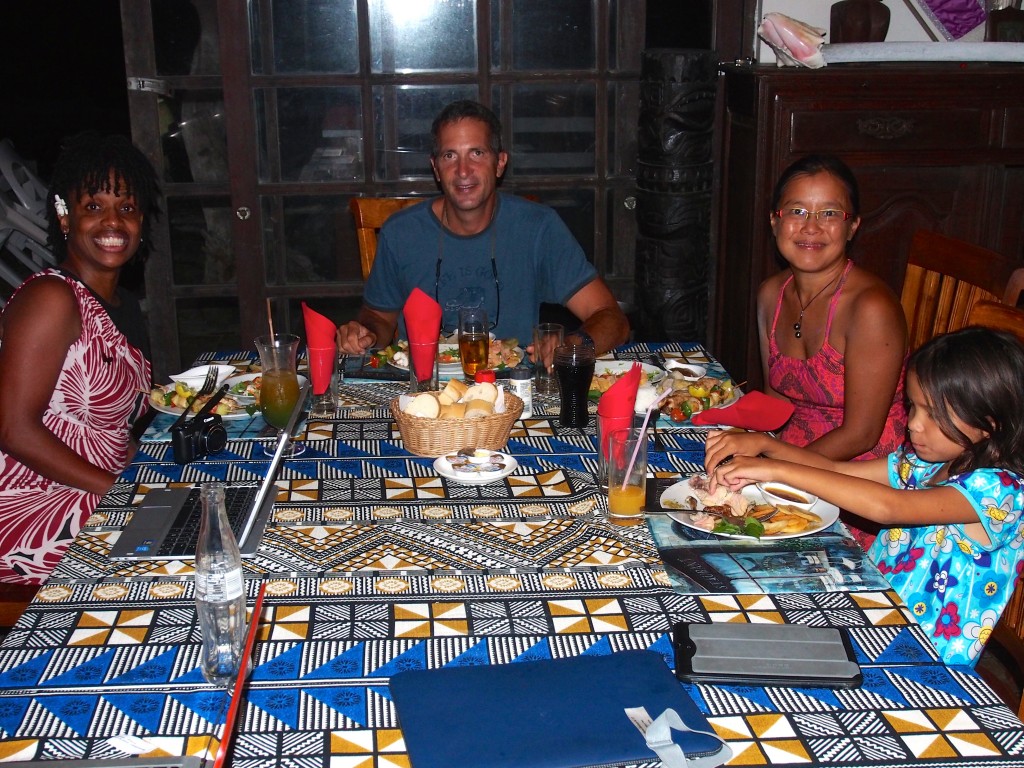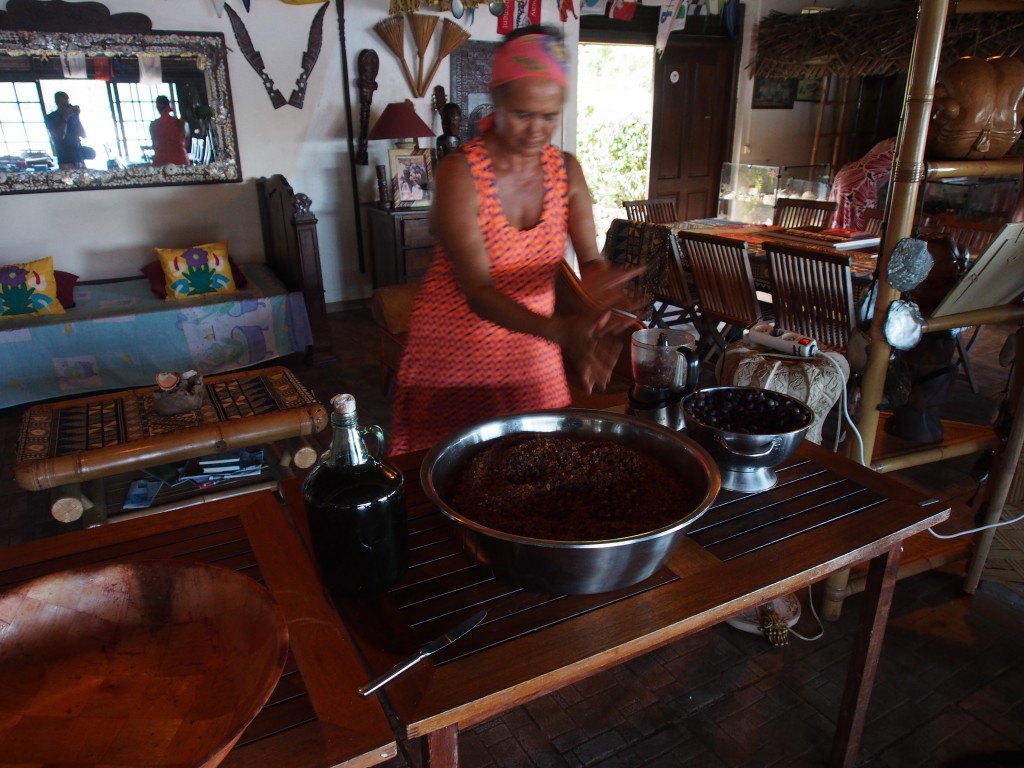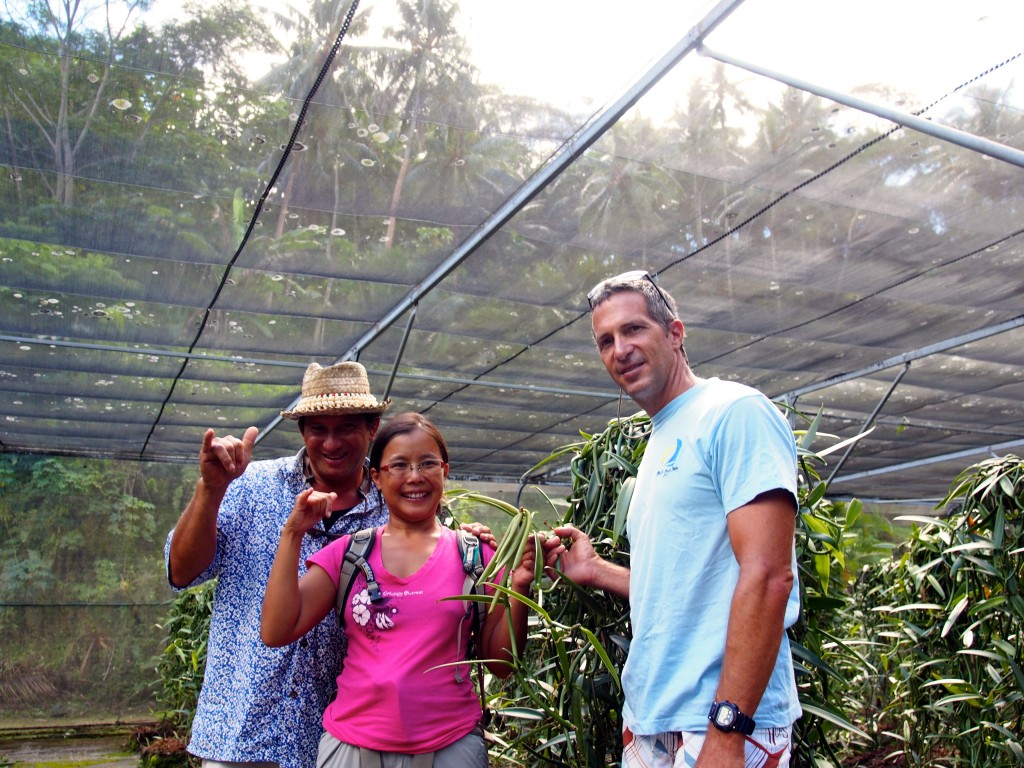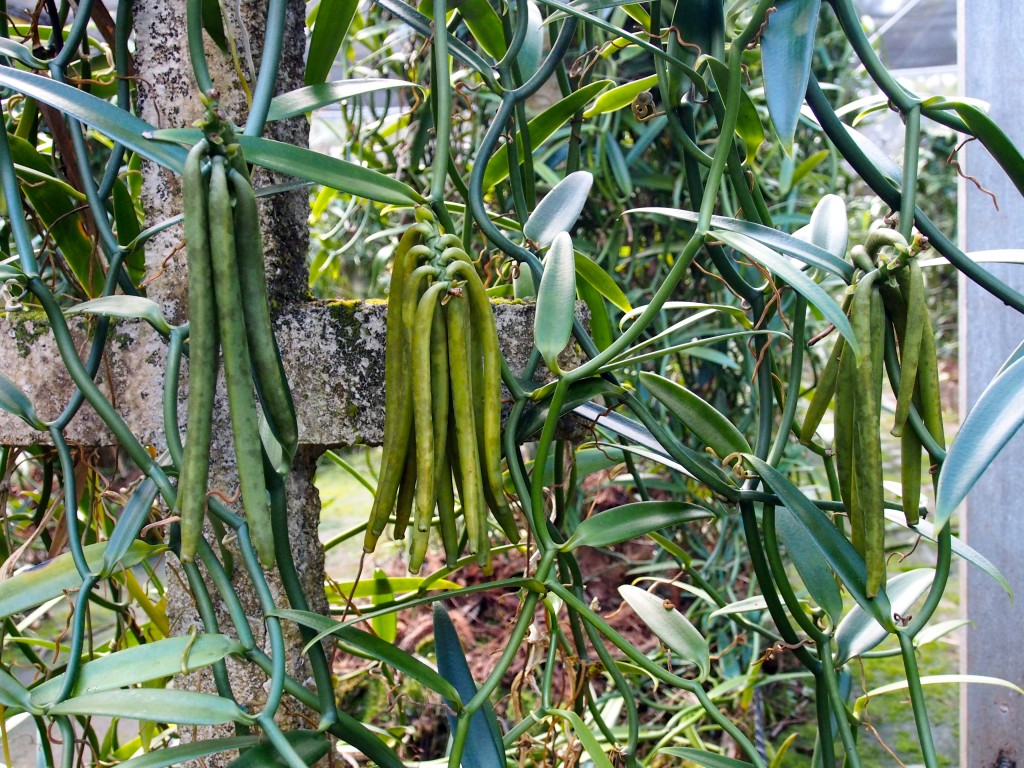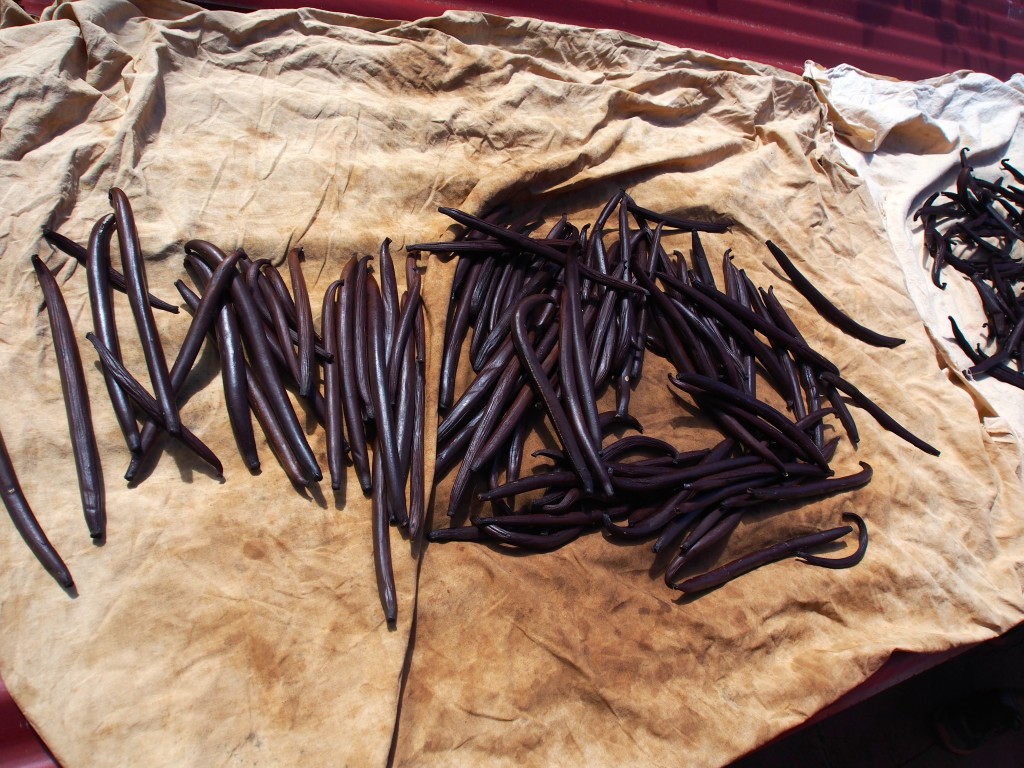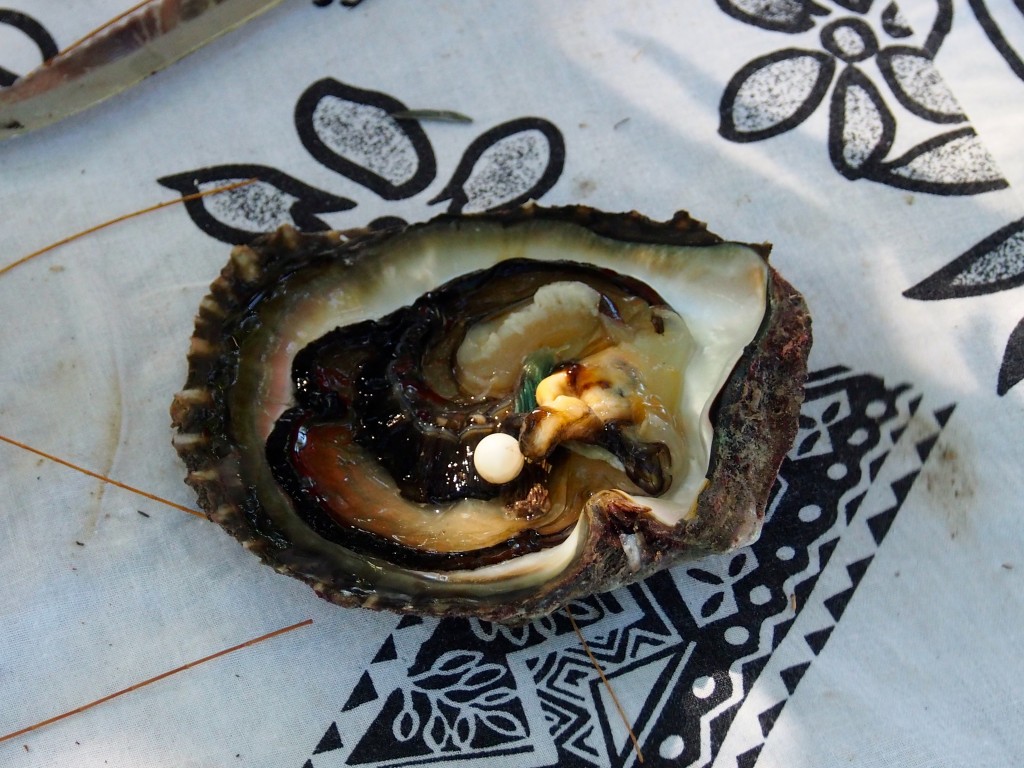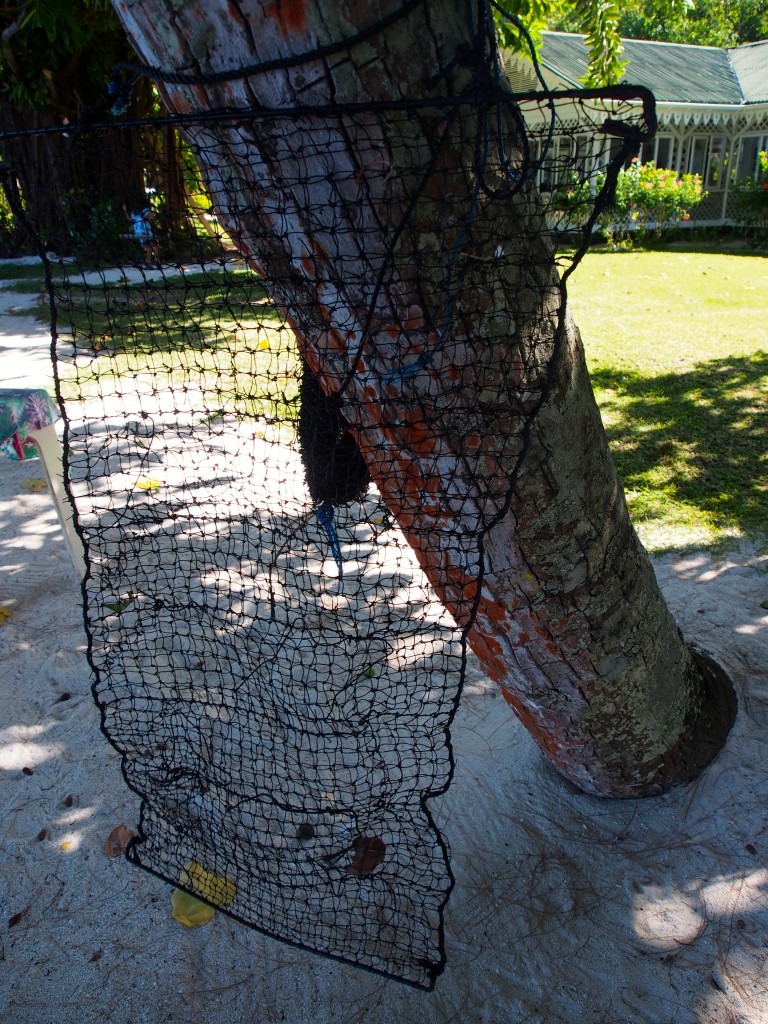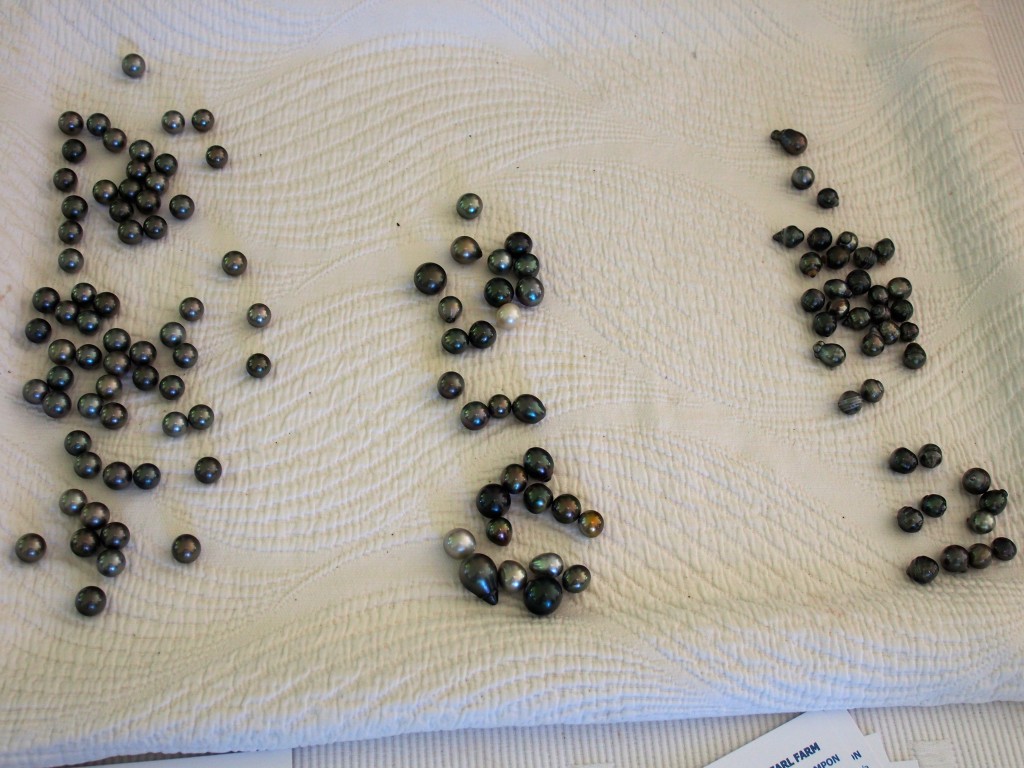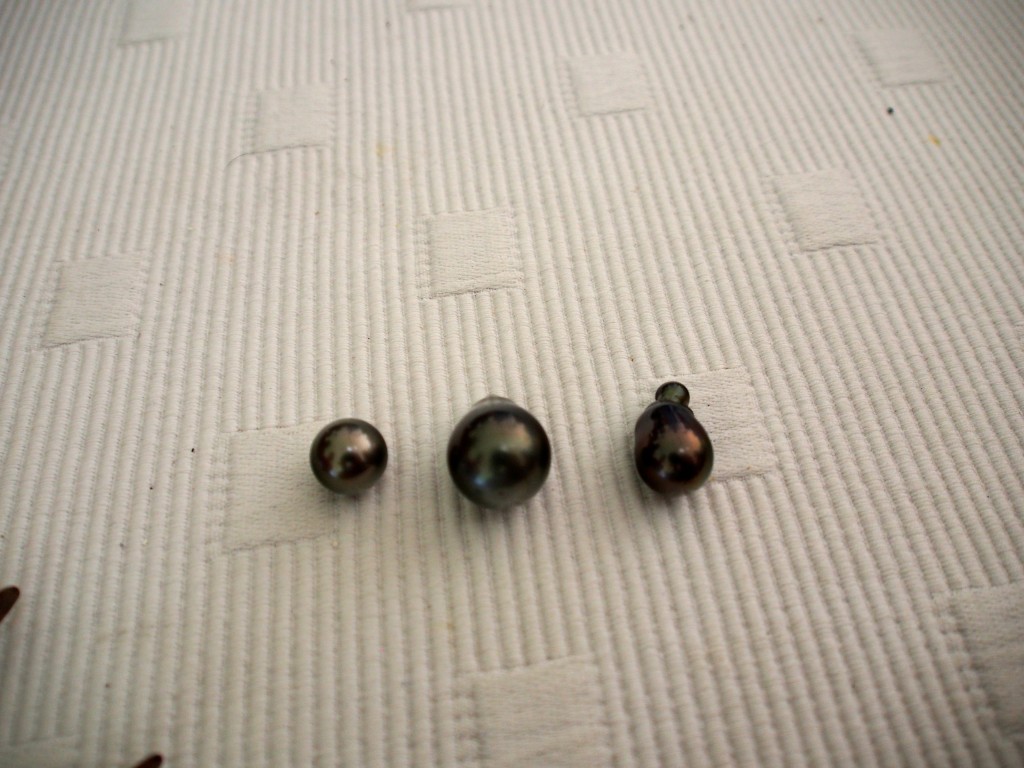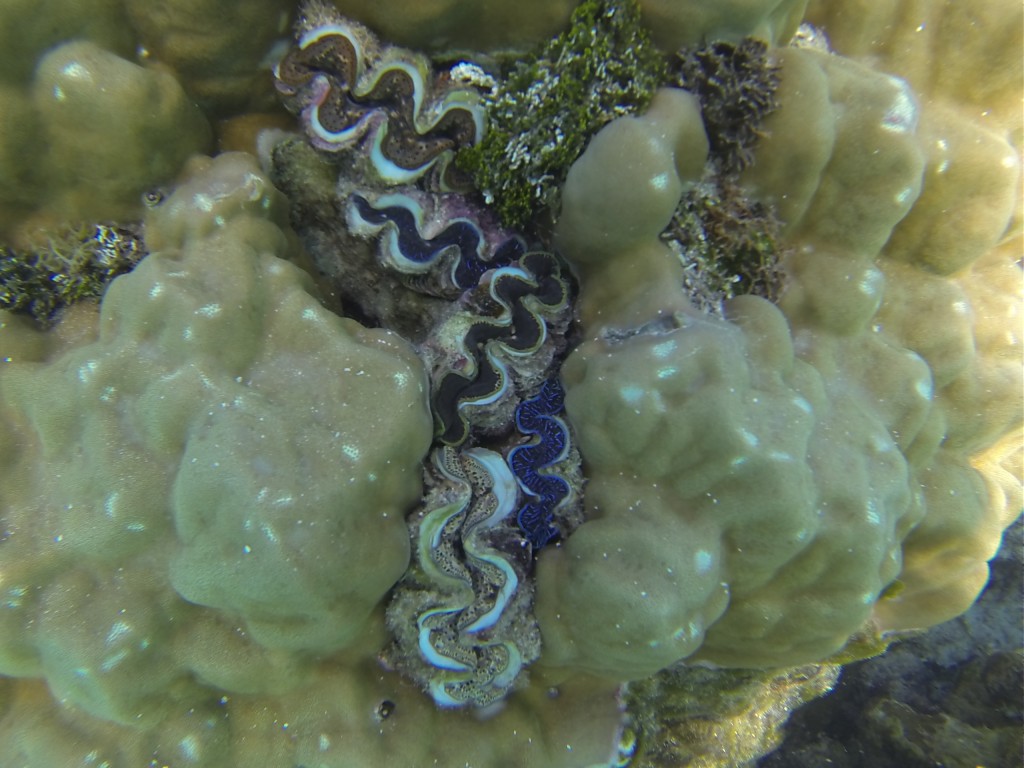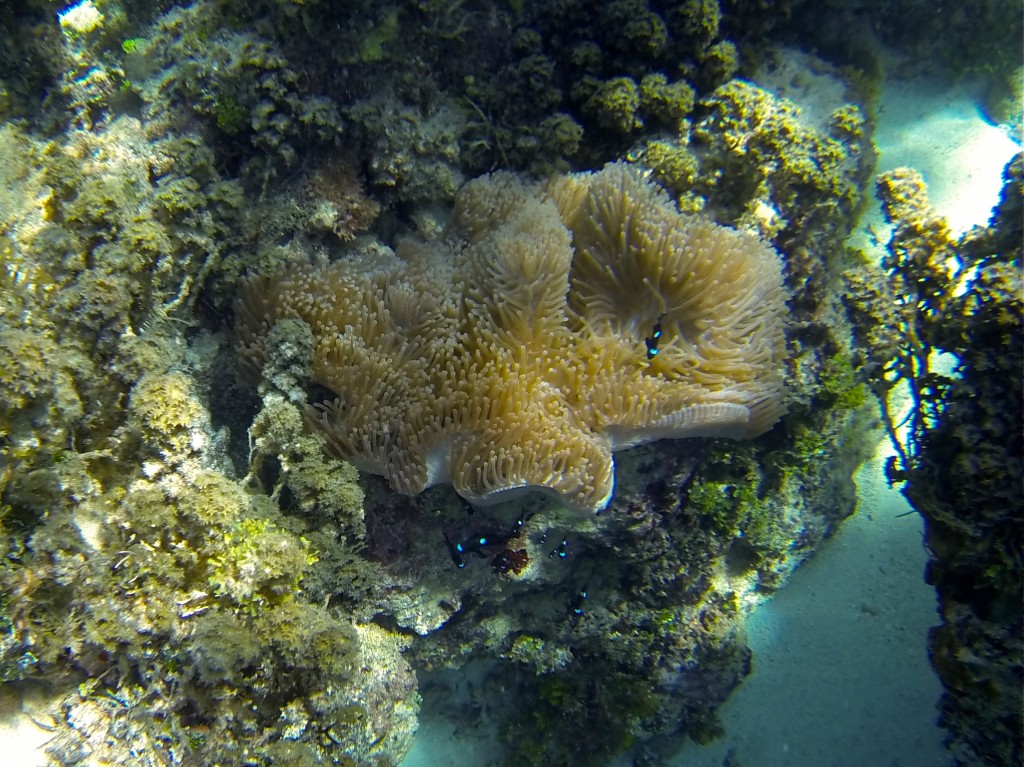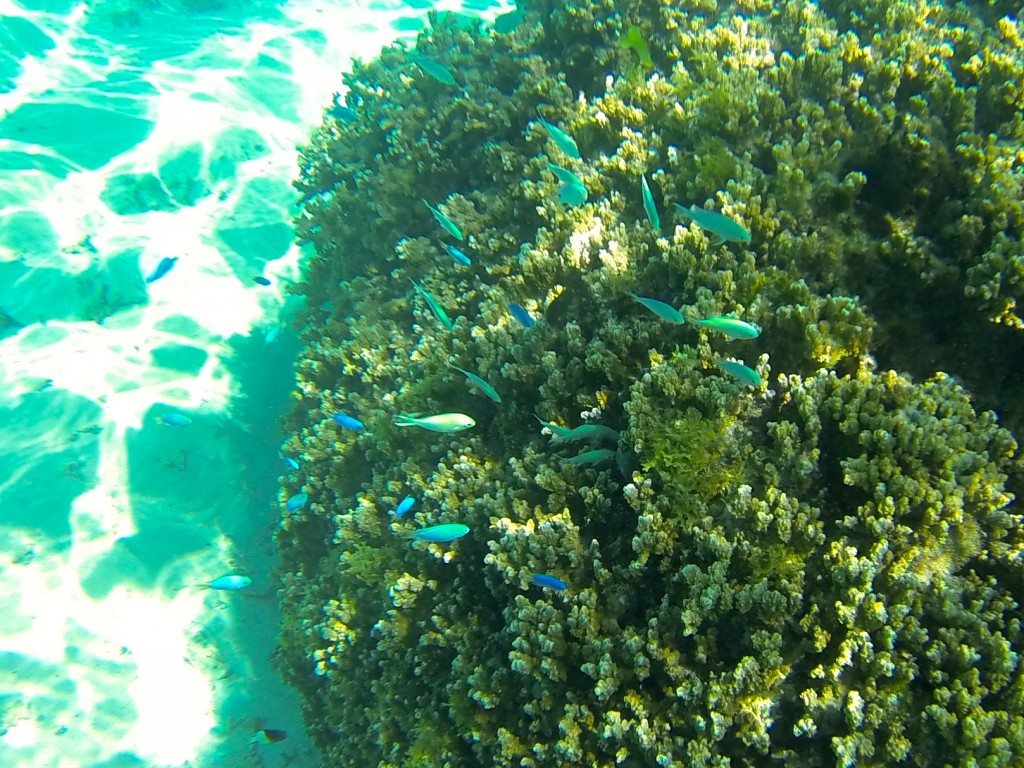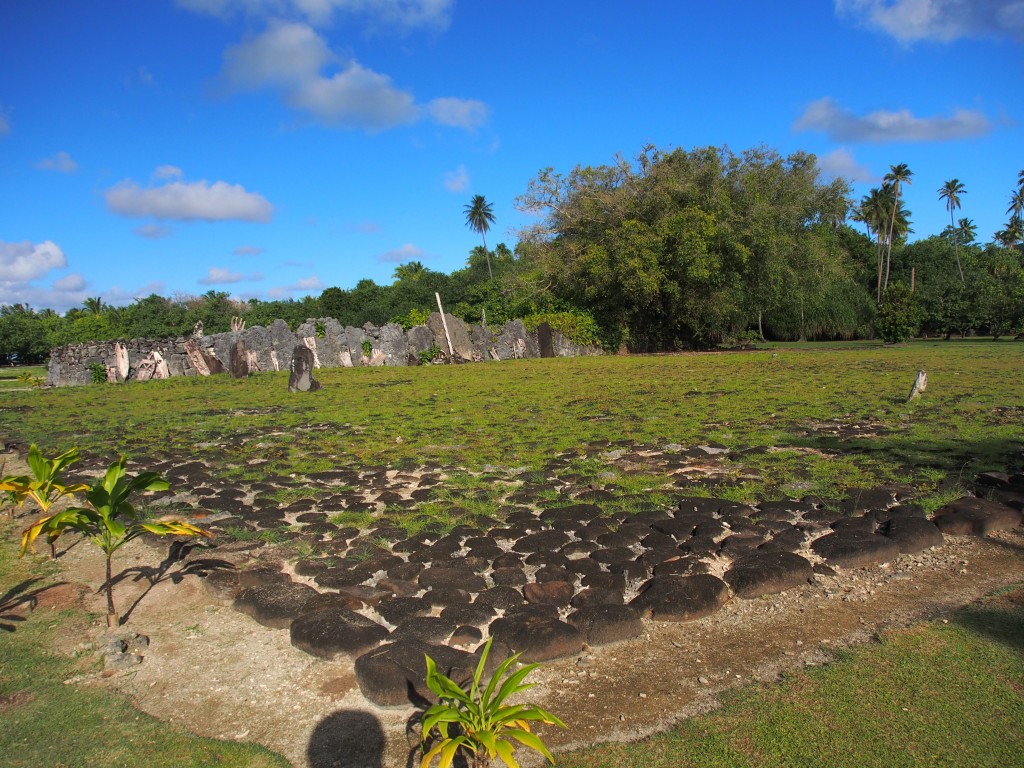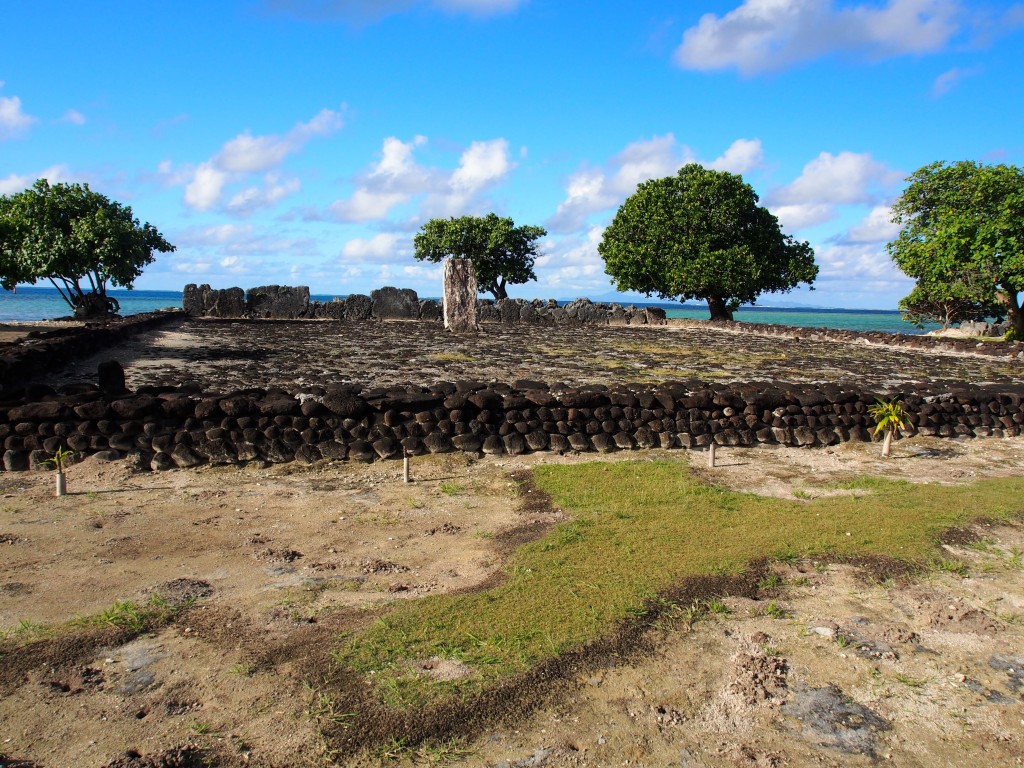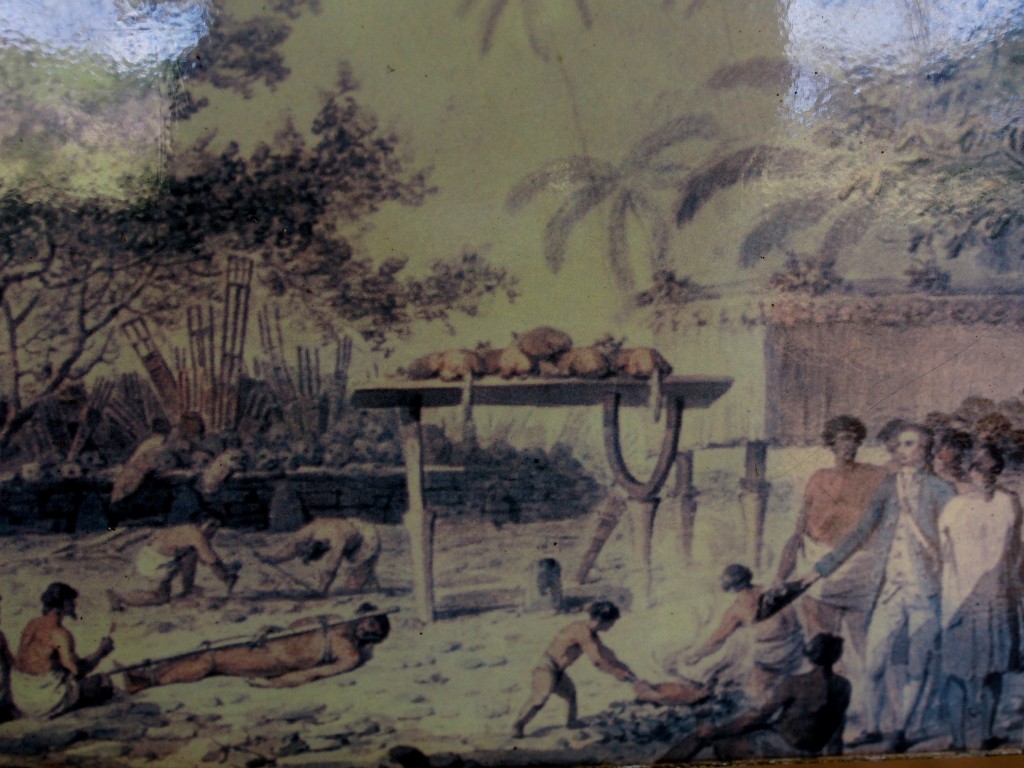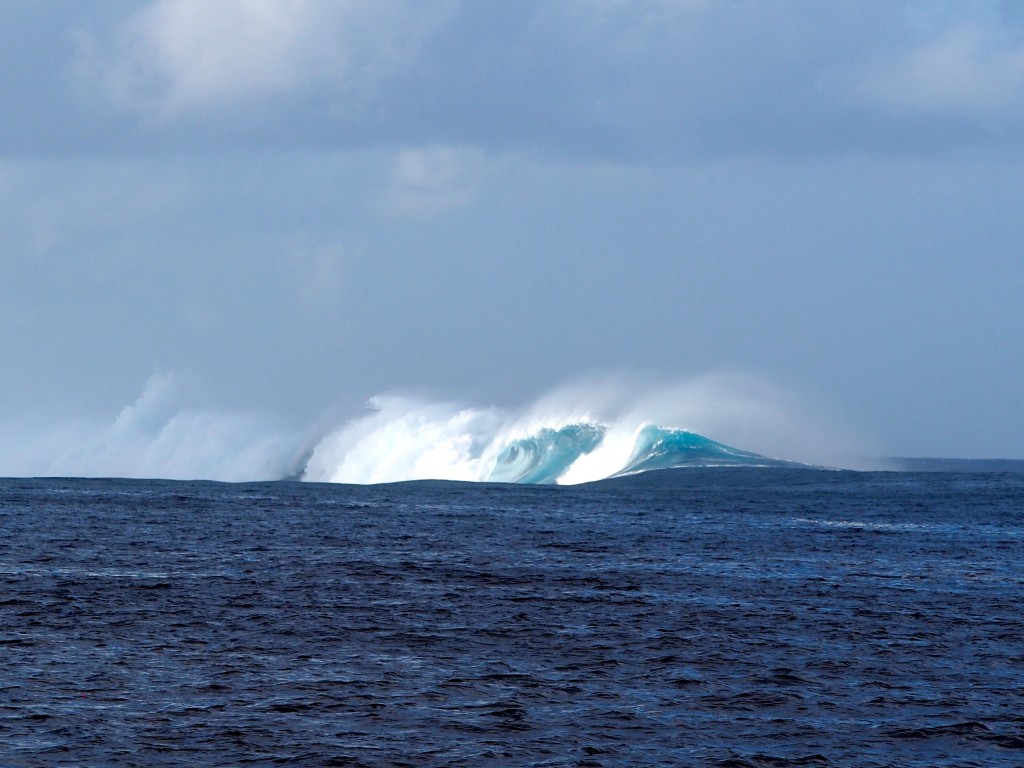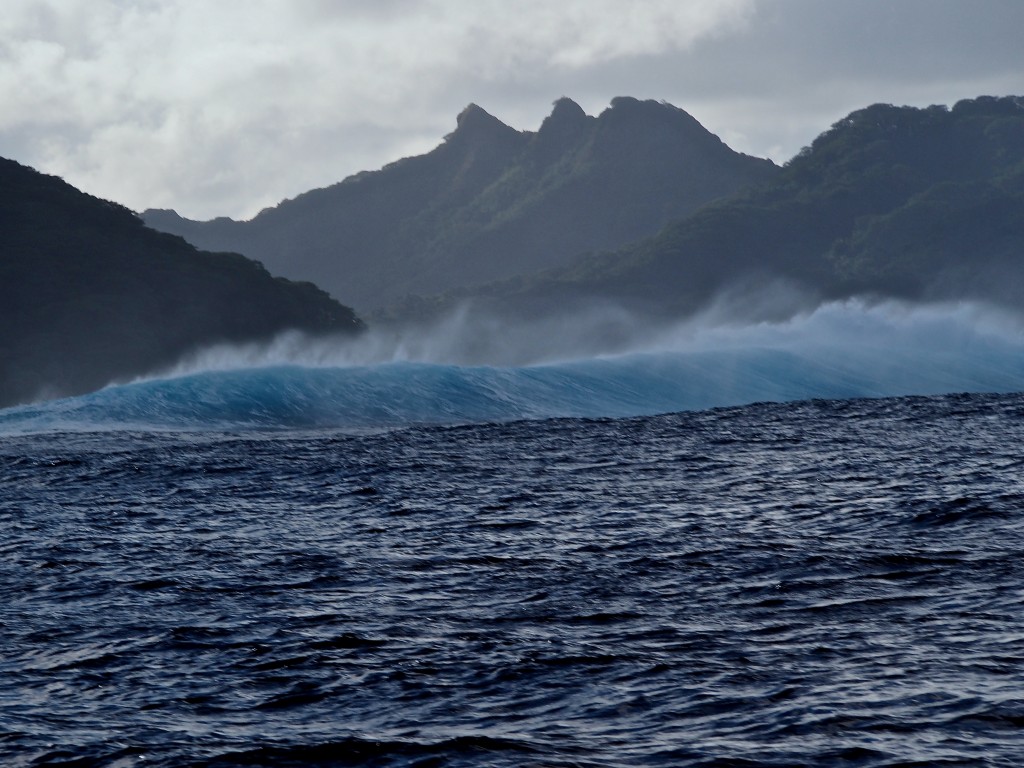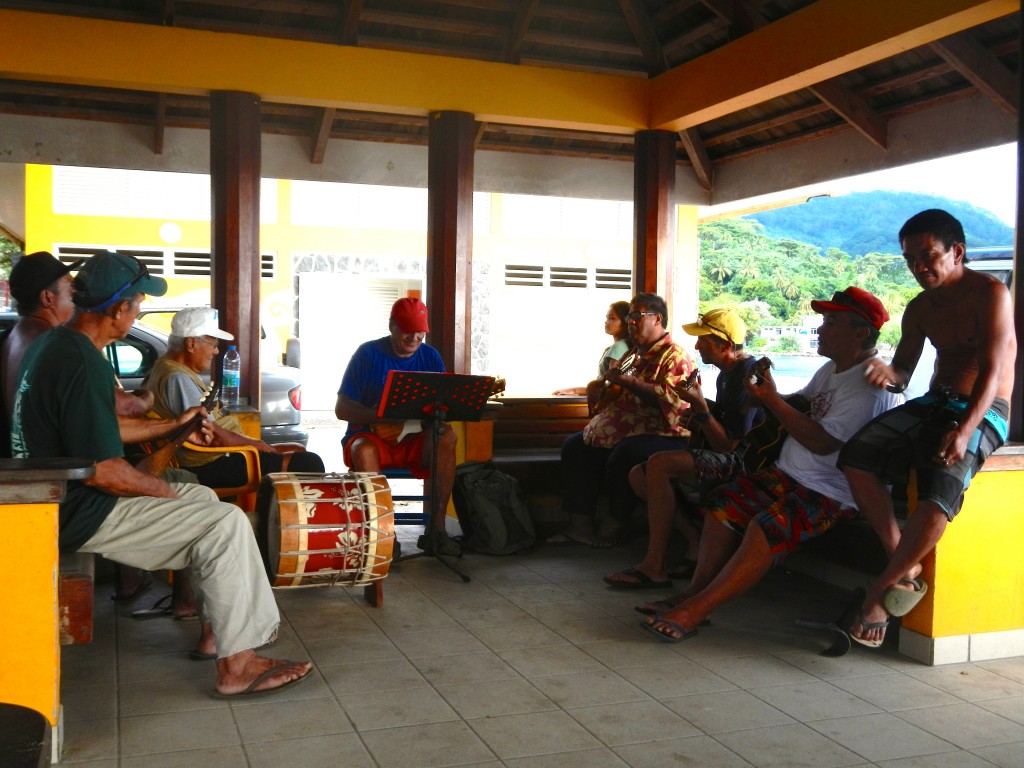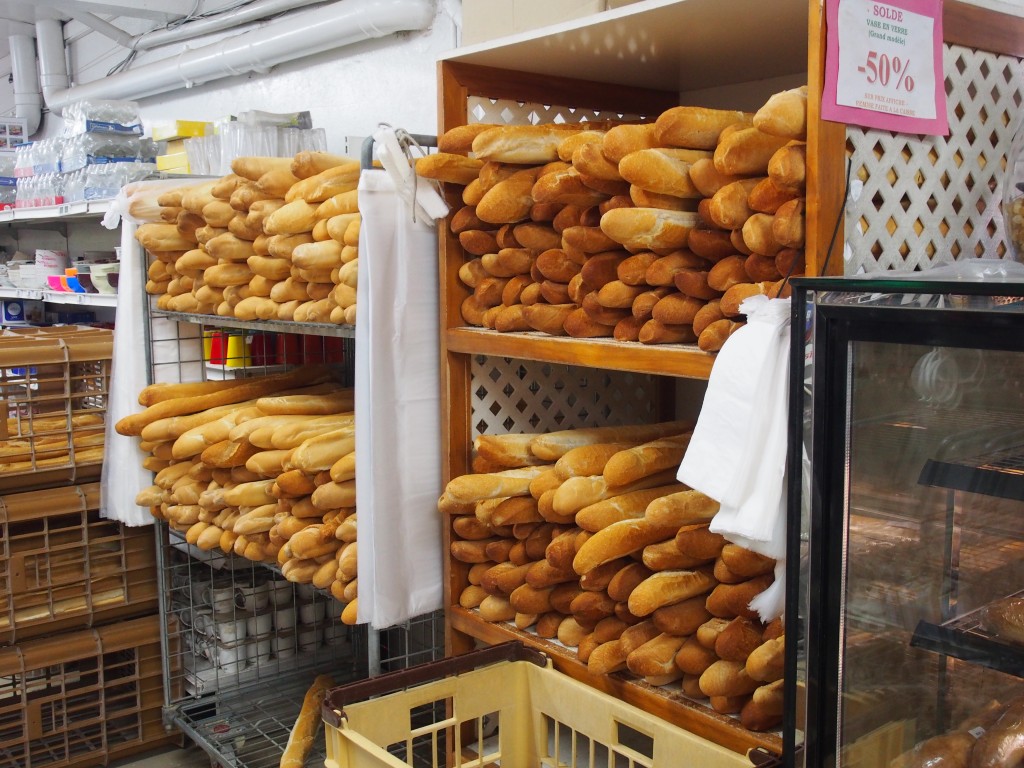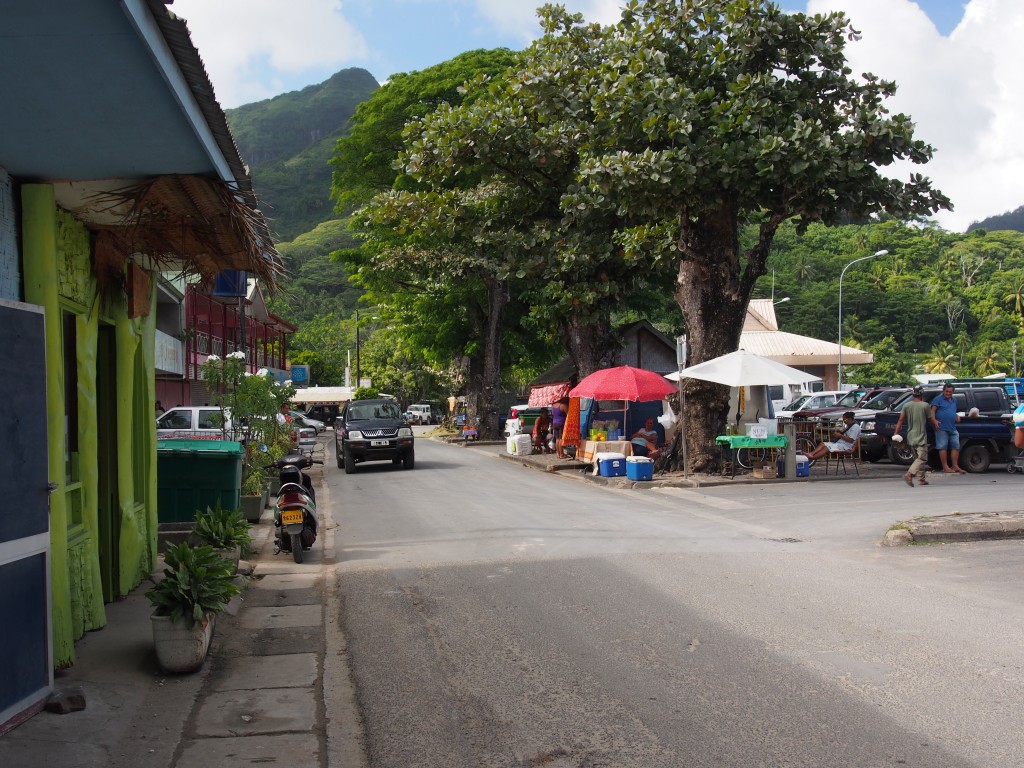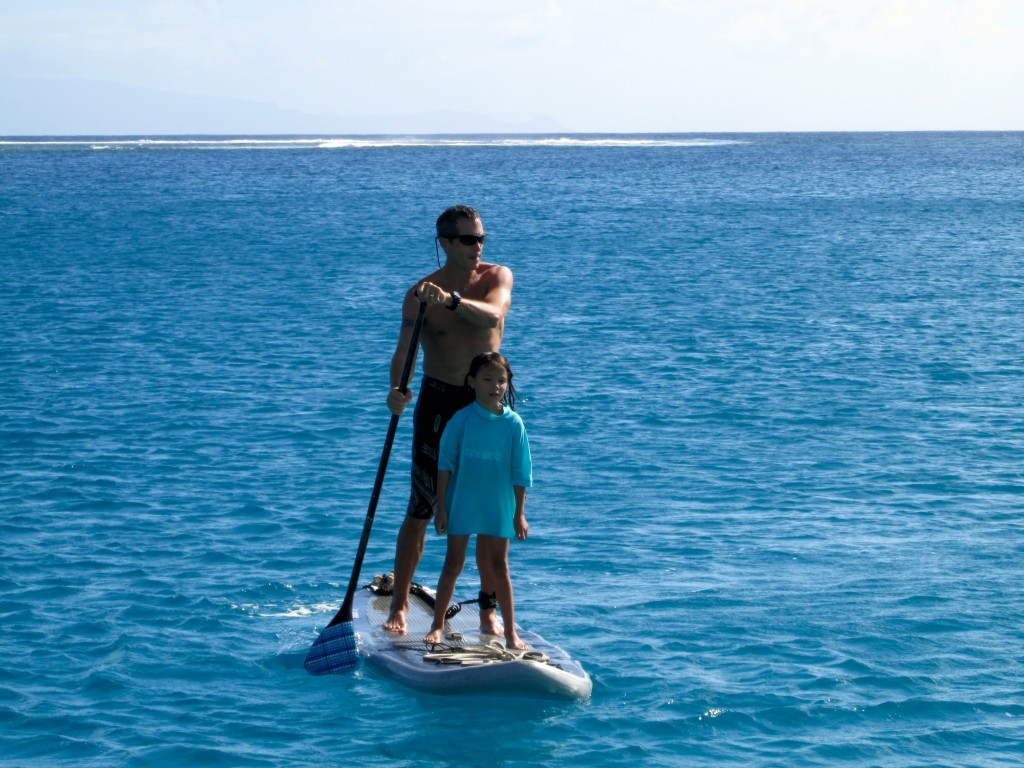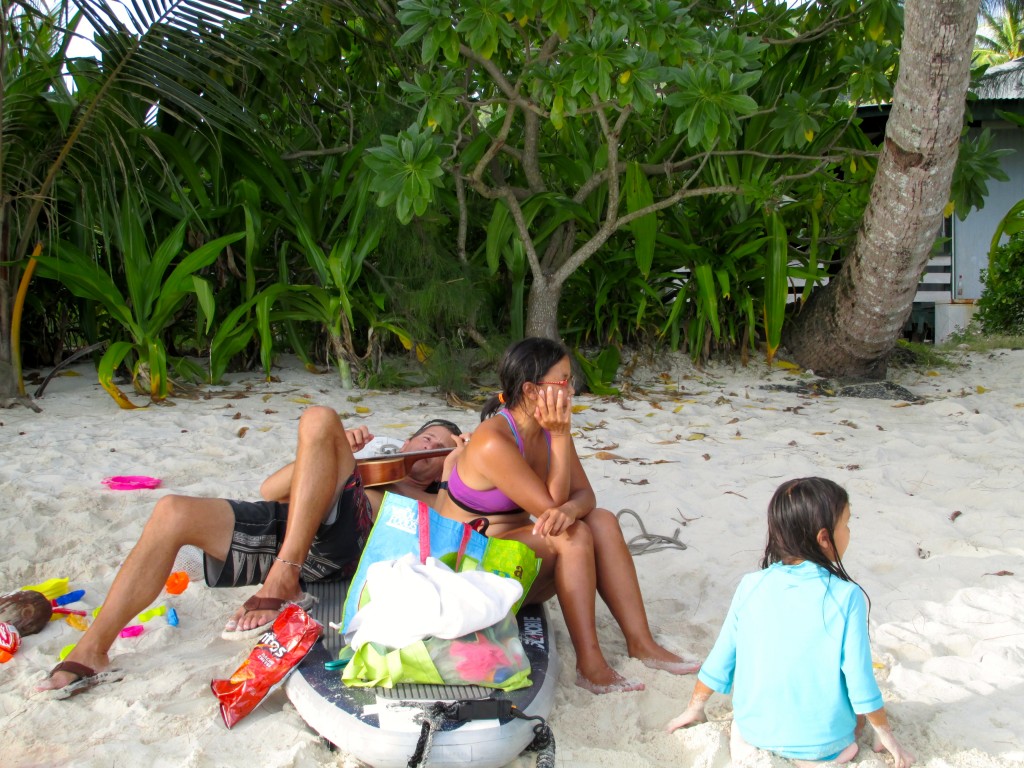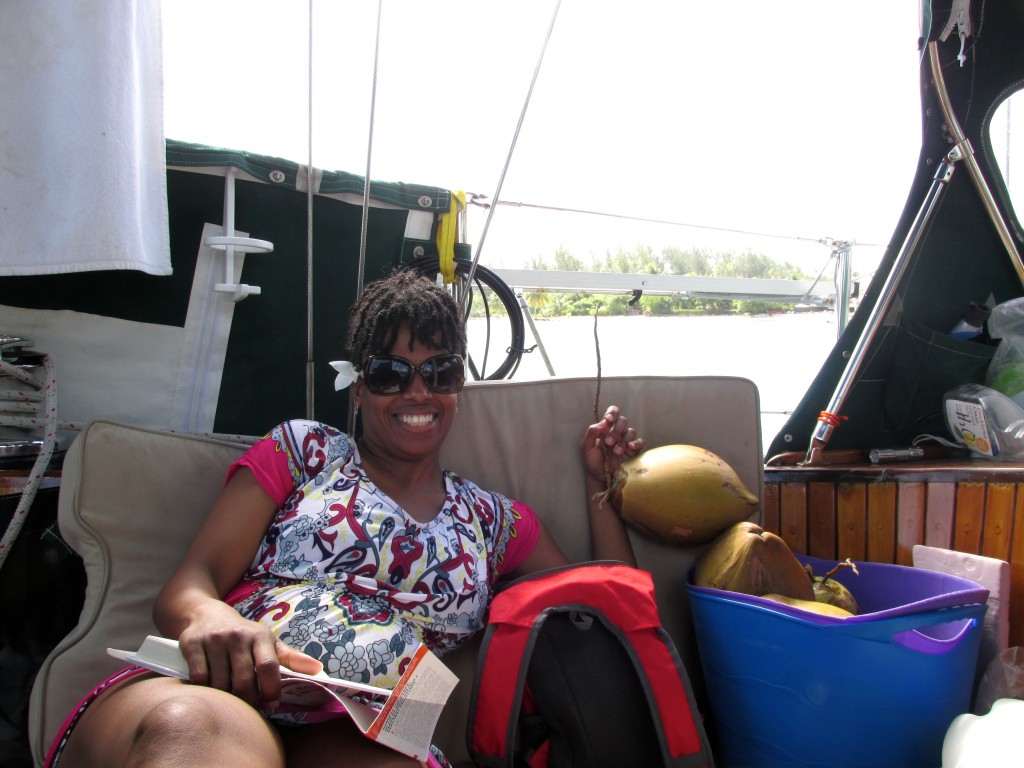Current conditions: 15knt S wind, sunny skies, 6knt boat speed.
We spotted the tall mountain on Rarotonga from 50 miles out on day 5. We are now 25 miles away and will arrive between 9 and 10pm. There is no anchorage on Rarotonga and the only mooring is at Avatiu Harbor on the north end of the island. We’ll have to hove-to a few miles off the coast until tomorrow daybreak, then radio the harbor master to get instructions on checking into the Cook Islands.
Dividing the nearly 600 mile passage into two halves, the first half can be summarized as light winds, smooth seas, and a lot of motoring. The second half was quite the opposite–plenty of wind, rough seas, and almost all sailing. The wind direction changed a lot, but was always in front of the beam, making it a slower than normal passage. Most of the time we sailed close-hauled and beat into the waves. As a front went through us late on day 3, the wind went to the mid-20’s and waves were breaking on deck (and of course it was night-time). After that it was mostly a S or SW wind, not the typical SE trade winds we were hoping for. In spite of that, we had a good passage with Otto (electric auto pilot) steering most of the first half, and Ian (mechanical steering wind vane) steering most of the second half. I remember hand-steering during a 4-hour night shift when the seas were too rough for Ian to maintain good control–other than that, we mostly relaxed and just made periodic adjustments to the wind vane.
This has been our longest passage with just the 3 of us aboard and we were wondering how the sleep deprivation would affect us. Karen and I did 4 hour watches at night–I took 8pm to midnight, Karen took midnight to 4am, and I did 4am to 8am. The rest of the day we took turns in the cockpit while the other got caught up on sleep. We ran the Garman chartplotter with AIS to alert us if an AIS-equipped vessel came within 12 miles of us, which allowed us to take short naps while on watch (something we didn’t do during the 23-day crossing when we had 3 taking watch). This worked well for us and we aren’t exhausted after 5 days. We didn’t spot any boats (visually or on AIS) during the entire passage.
Jacintha did great on the passage too. On the first day out, she asked me when we’d get there. This was right out of Bora Bora and the sea was choppy so we were all not feeling so great. I told her it would be 5 days, and she smiled and said, “well, at least it’s not 10”! Now that’s a great attitude!! She finished her math book, worked on some vocabulary, read a lot, and watched a lot of movies. She slept in the cockpit most of the nights under blankets. Since the Marquesas, we’ve moved south through 12 degrees of latitude, or 720 miles. Being mid-winter in the southern hemisphere, we are now feeling the temperature change, especially at night. Sailing into a headwind, we needed 2 layers at night to stay comfortable. We even pulled out our foul weather gear when the spray was coming into the cockpit.
During the passage we noticed the Mizzen boom topping-lift broke. Since the Mizzen sail was up, it didn’t matter, but when we take the sail down there would be nothing to support the boom. A cotter-ring used on the pin to attach a block to the topping-lift line failed, but luckily the pin landed on deck and I had plenty of spare rings. With me clipped-in and standing on the push-pit reaching overhead and Karen handing me tools and the parts as needed, we were able to fix it in a very rolly sea!
Looking forward to exploring Rarotonga!
